The document discusses various JavaScript design patterns, focusing on object creation patterns, code reuse, and functional patterns. It covers creation methods, inheritance, and the advantages of different approaches, such as classical vs. prototypal inheritance. Additionally, it addresses anti-patterns and practical coding strategies, along with resources like JSLint for code quality improvements.



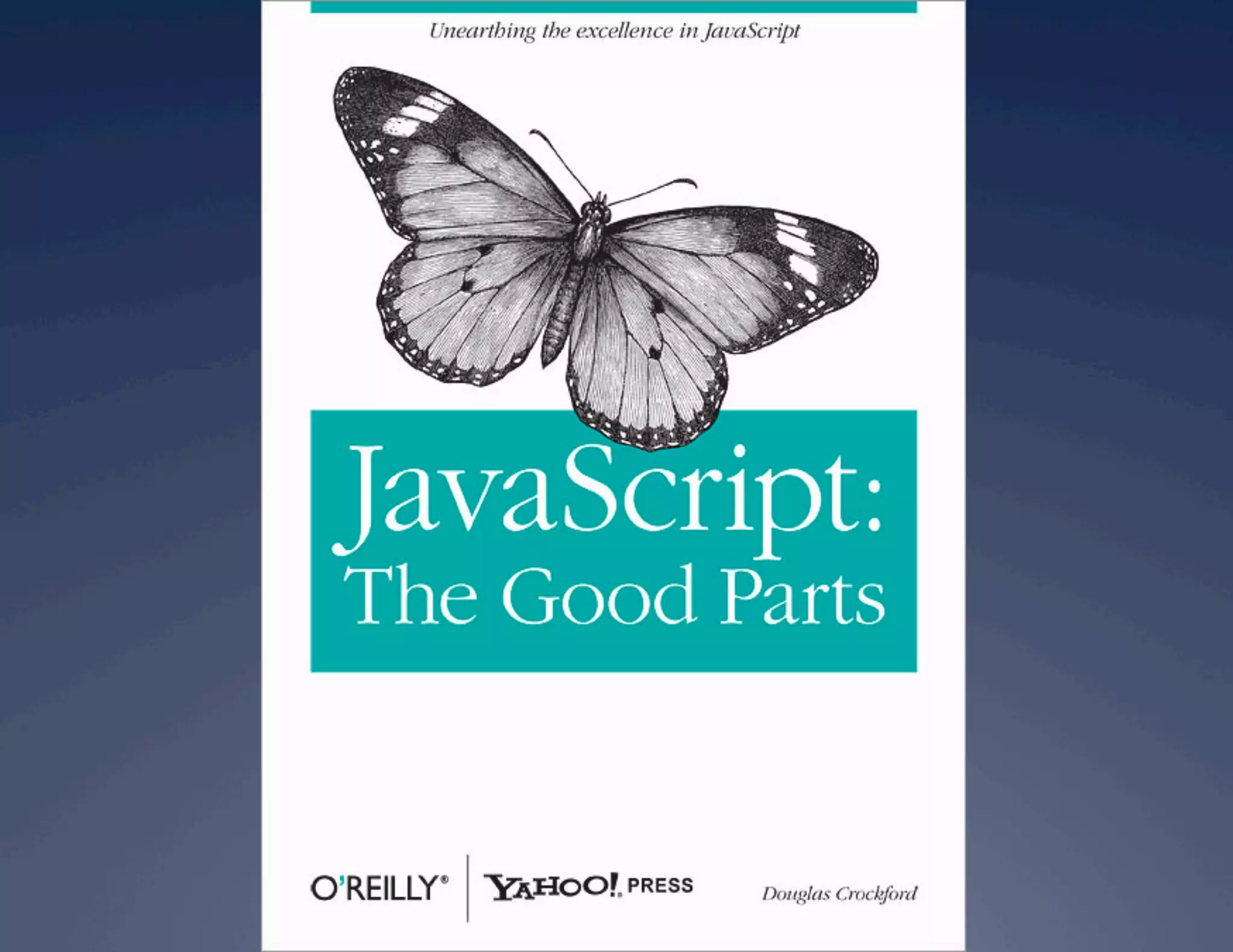
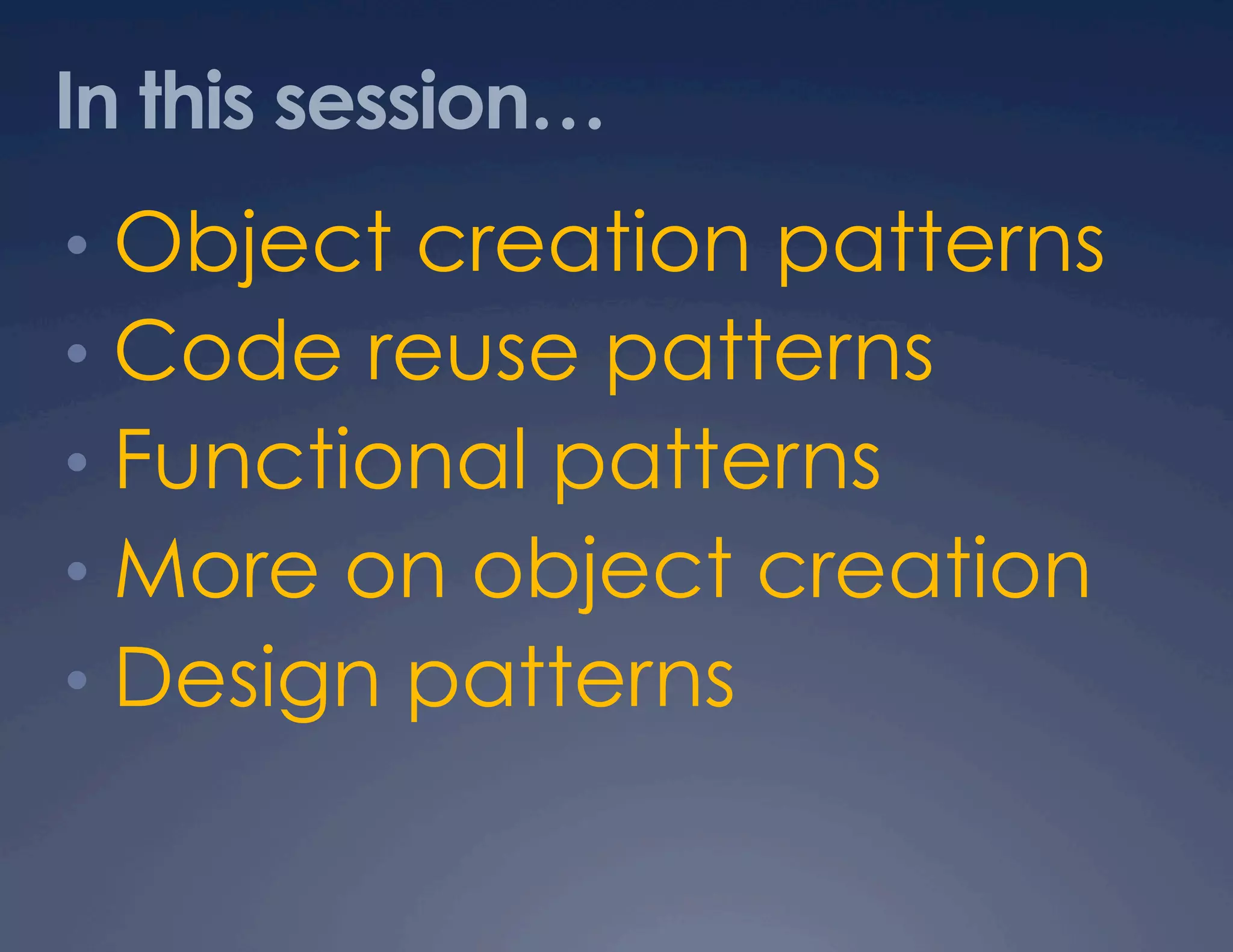



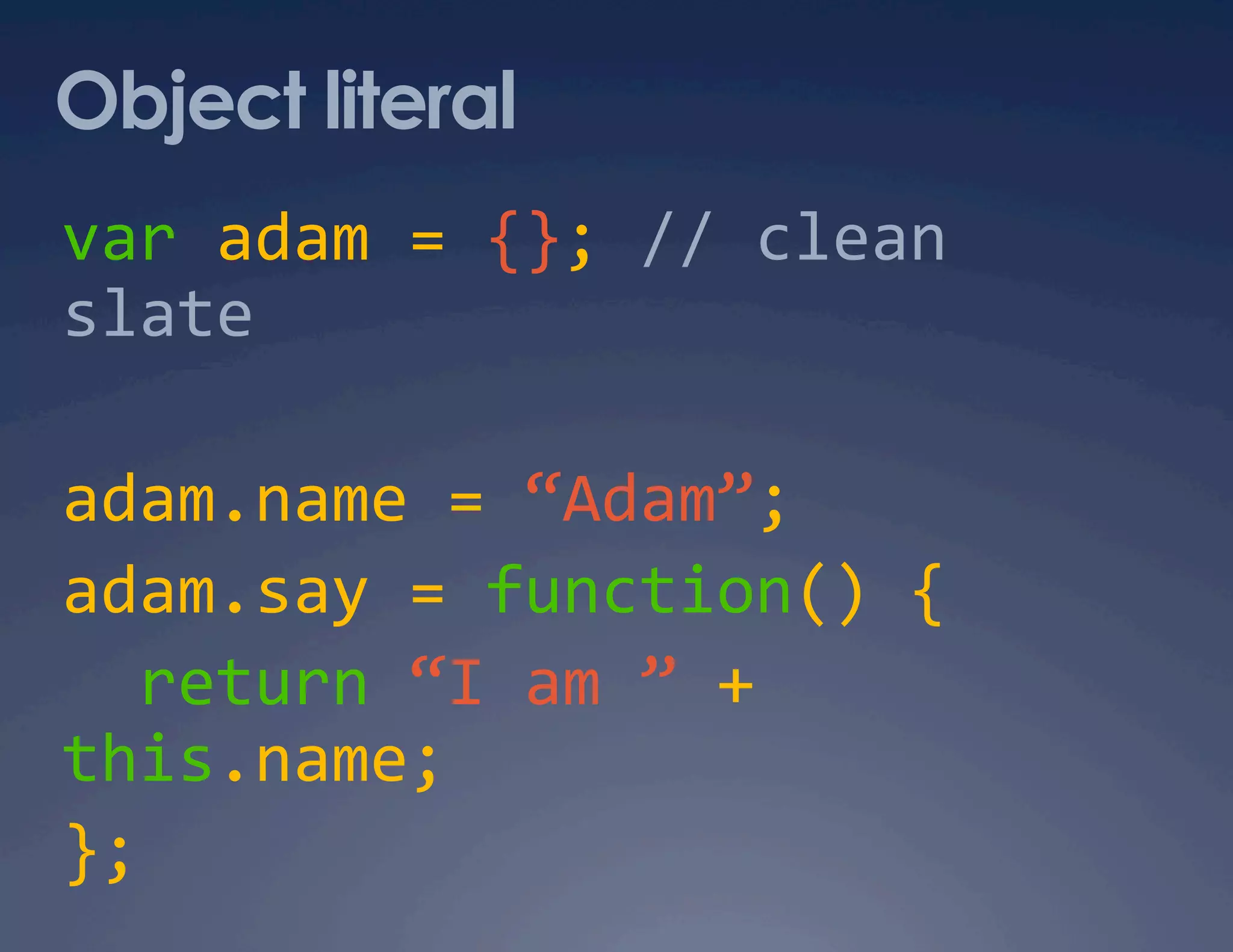
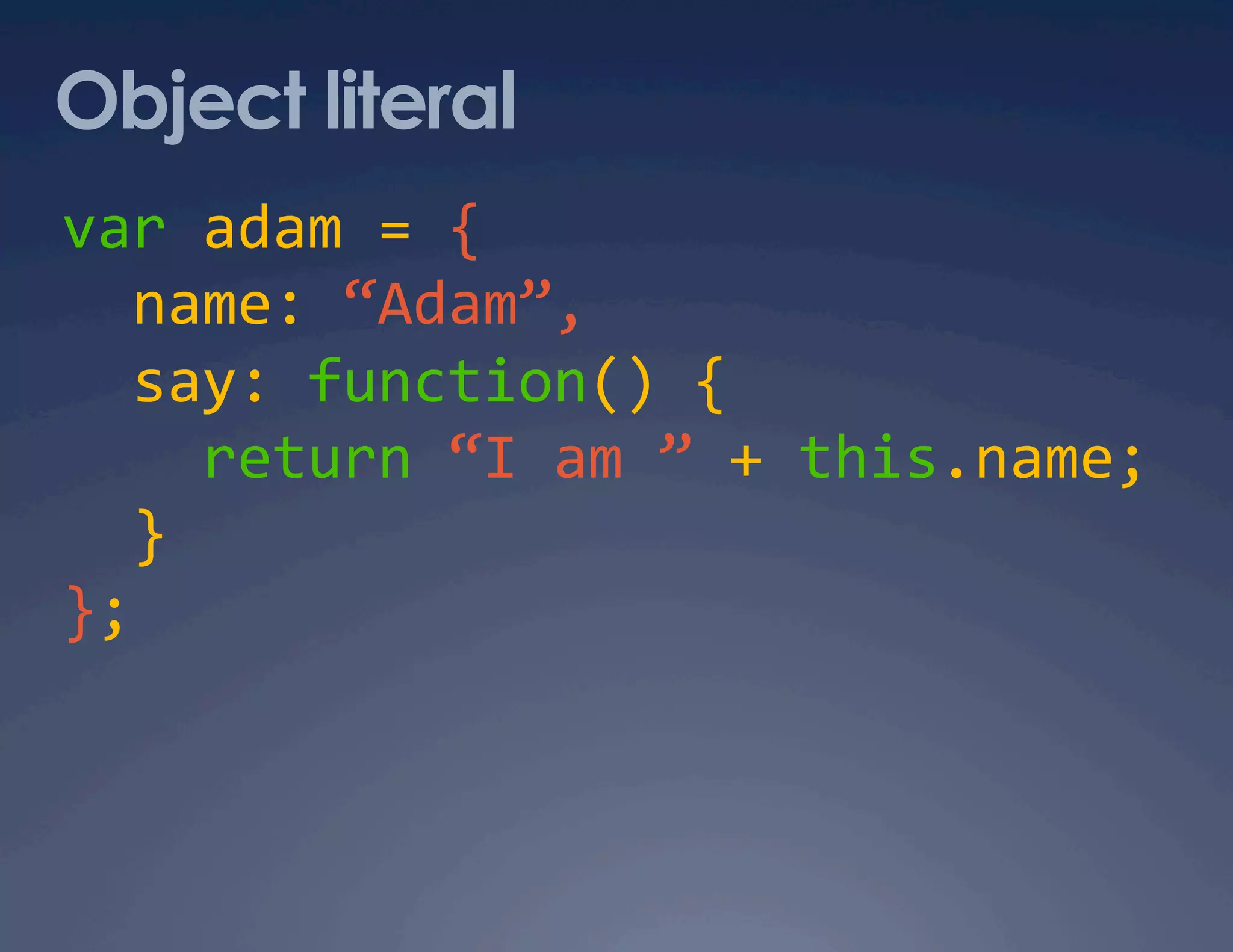
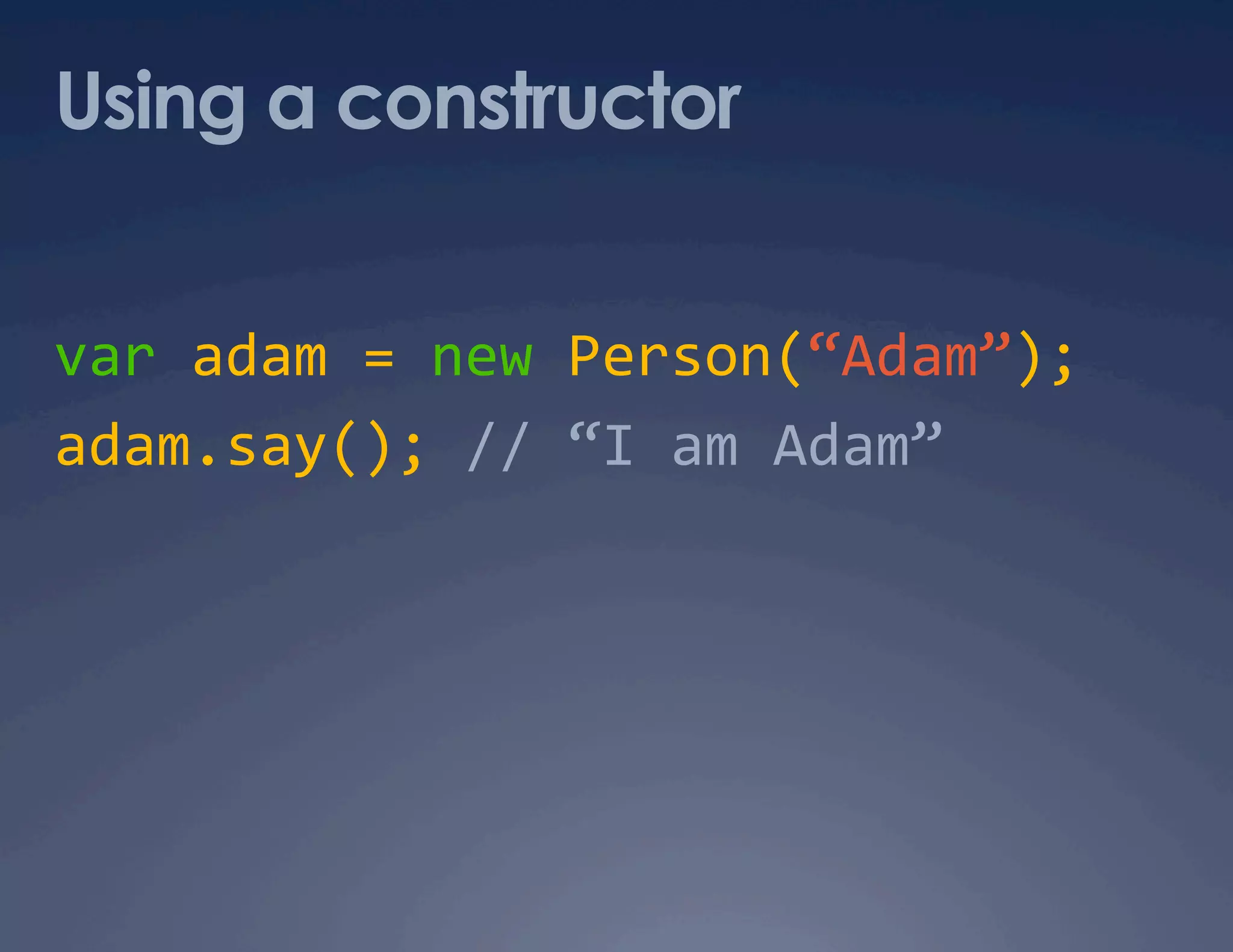
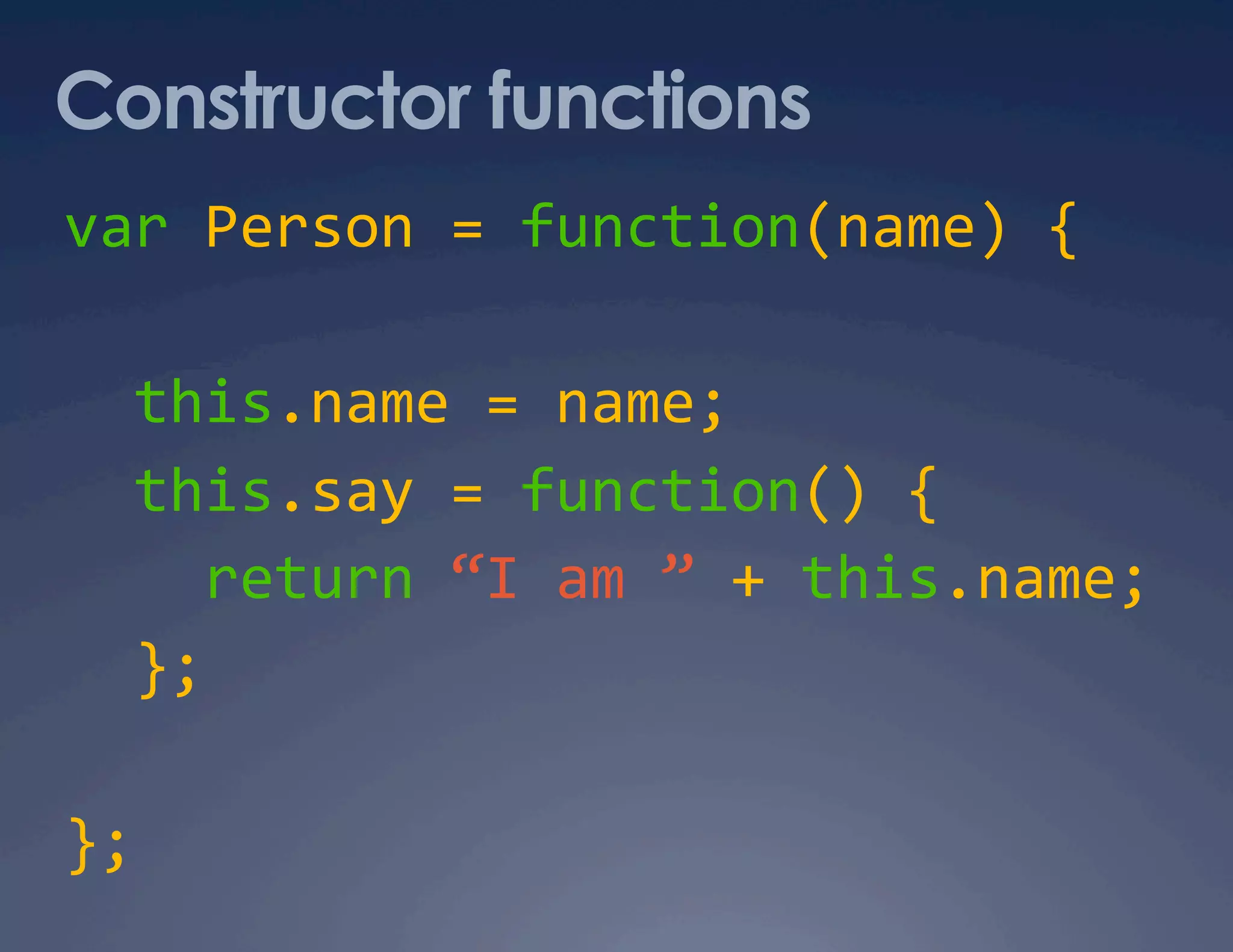
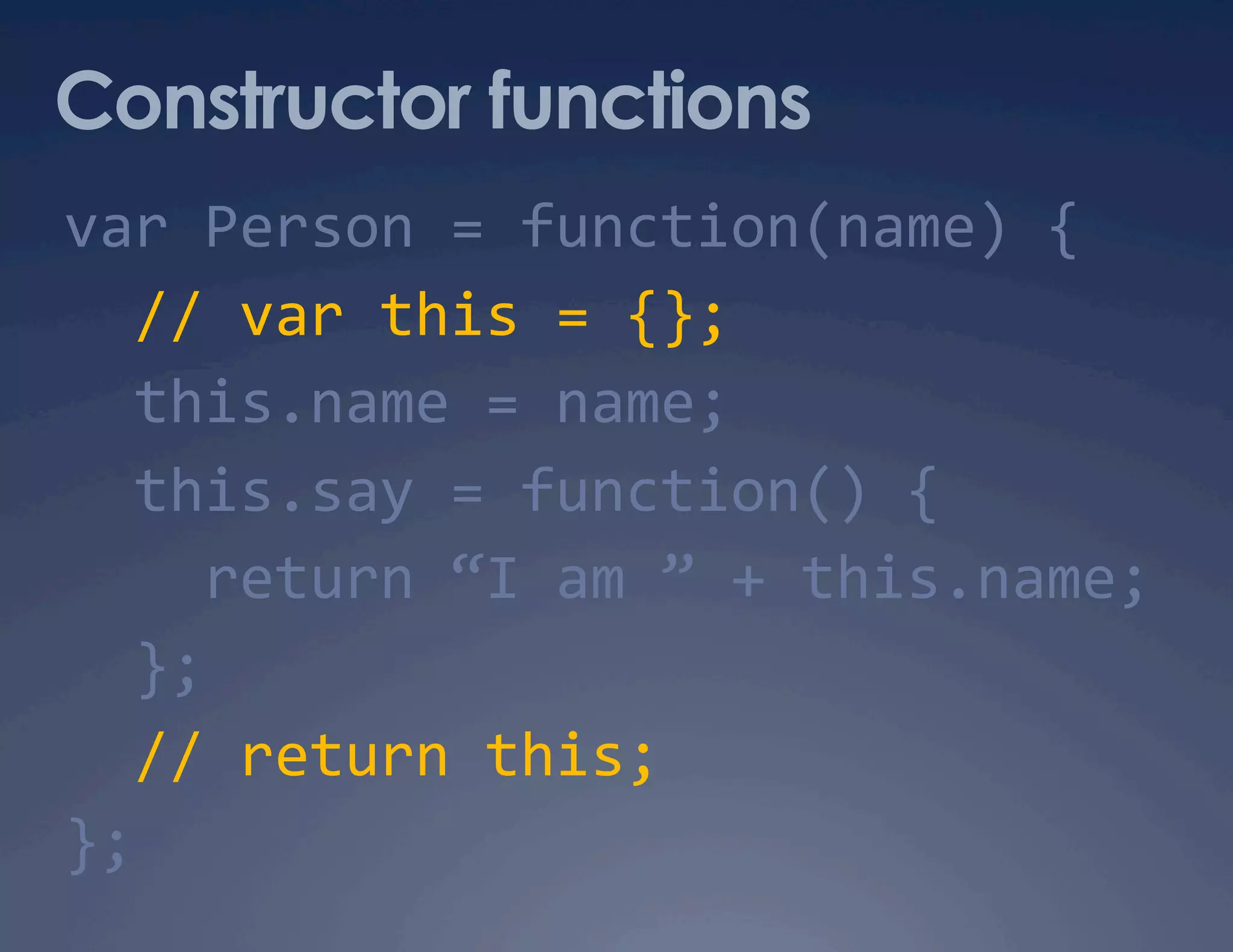
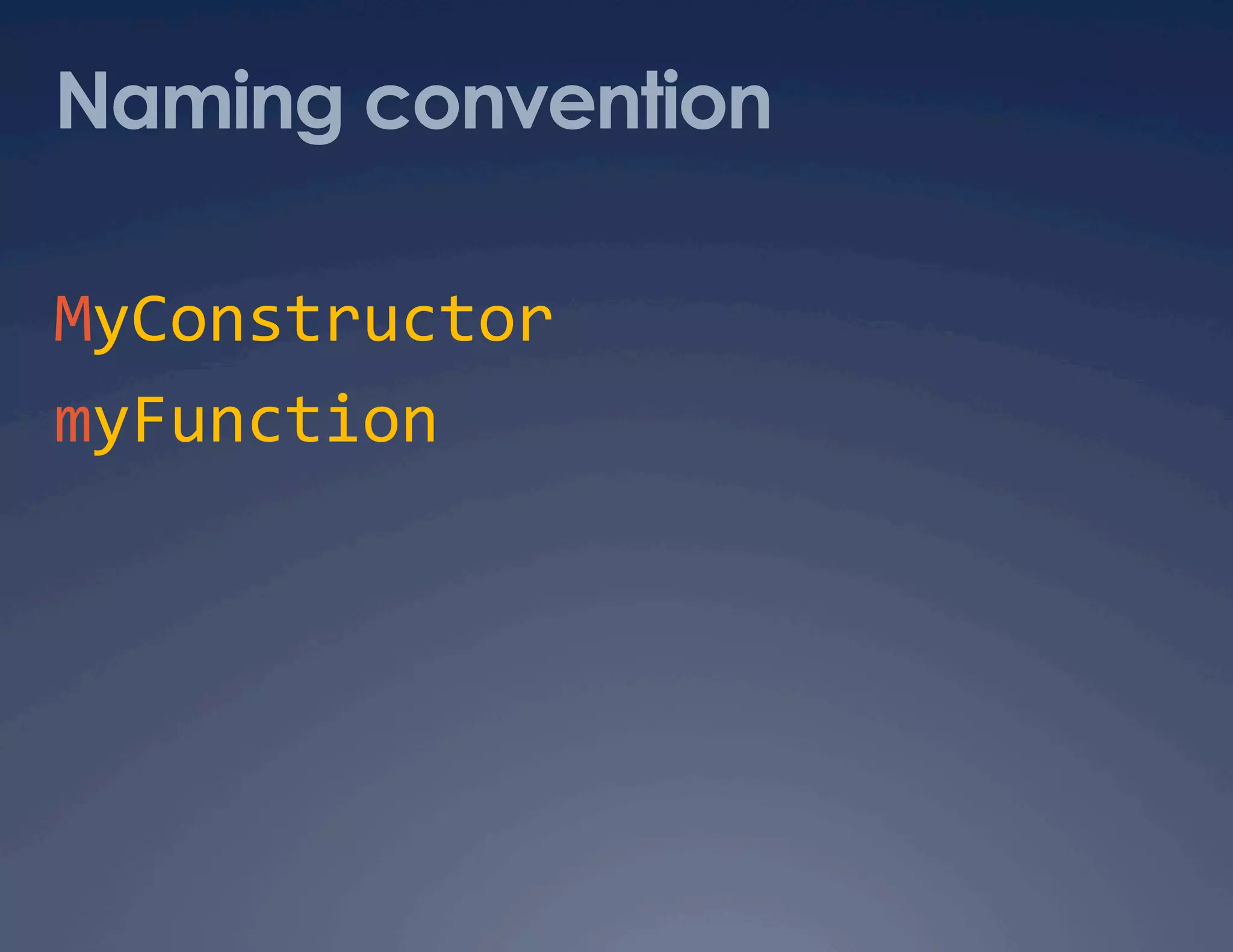
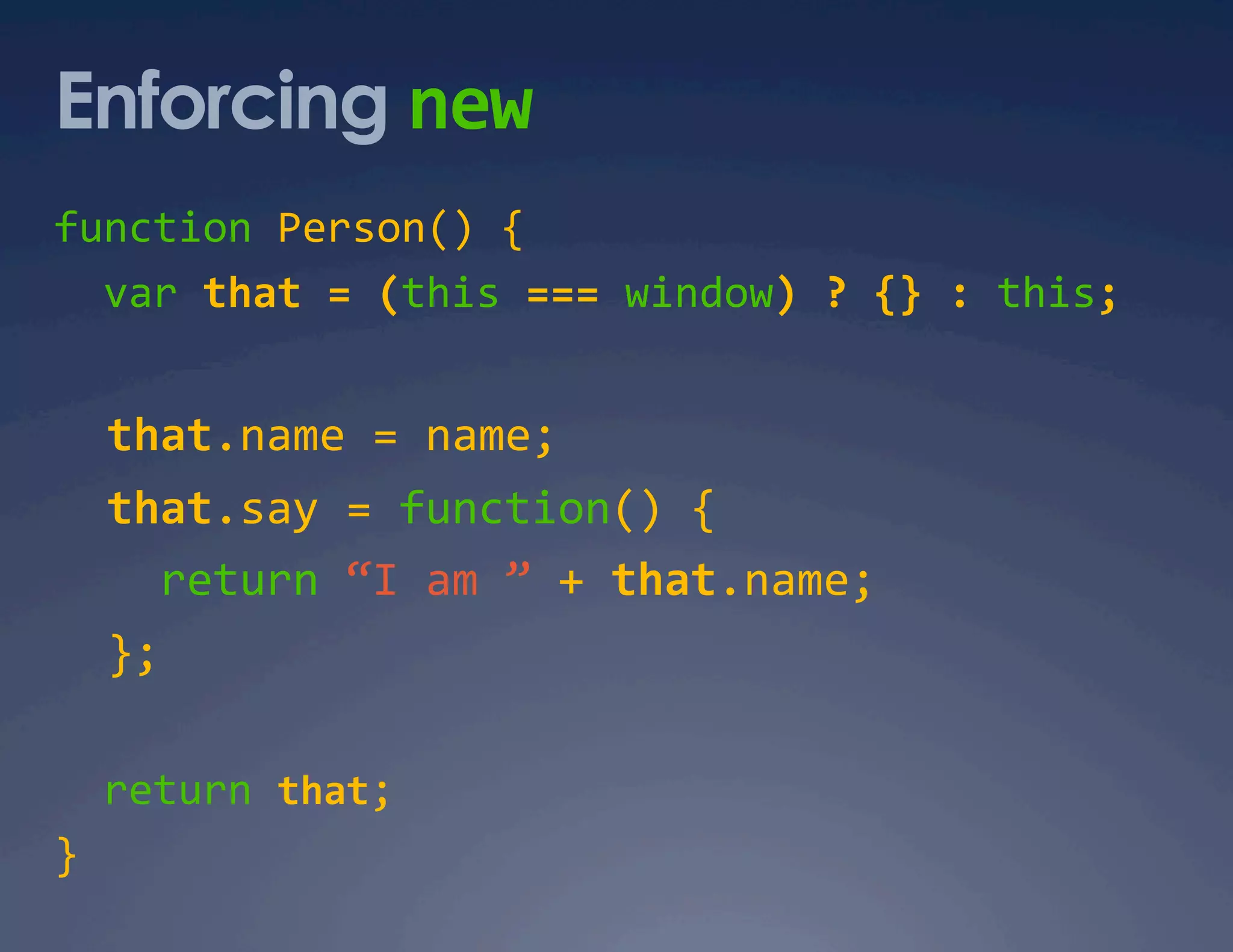
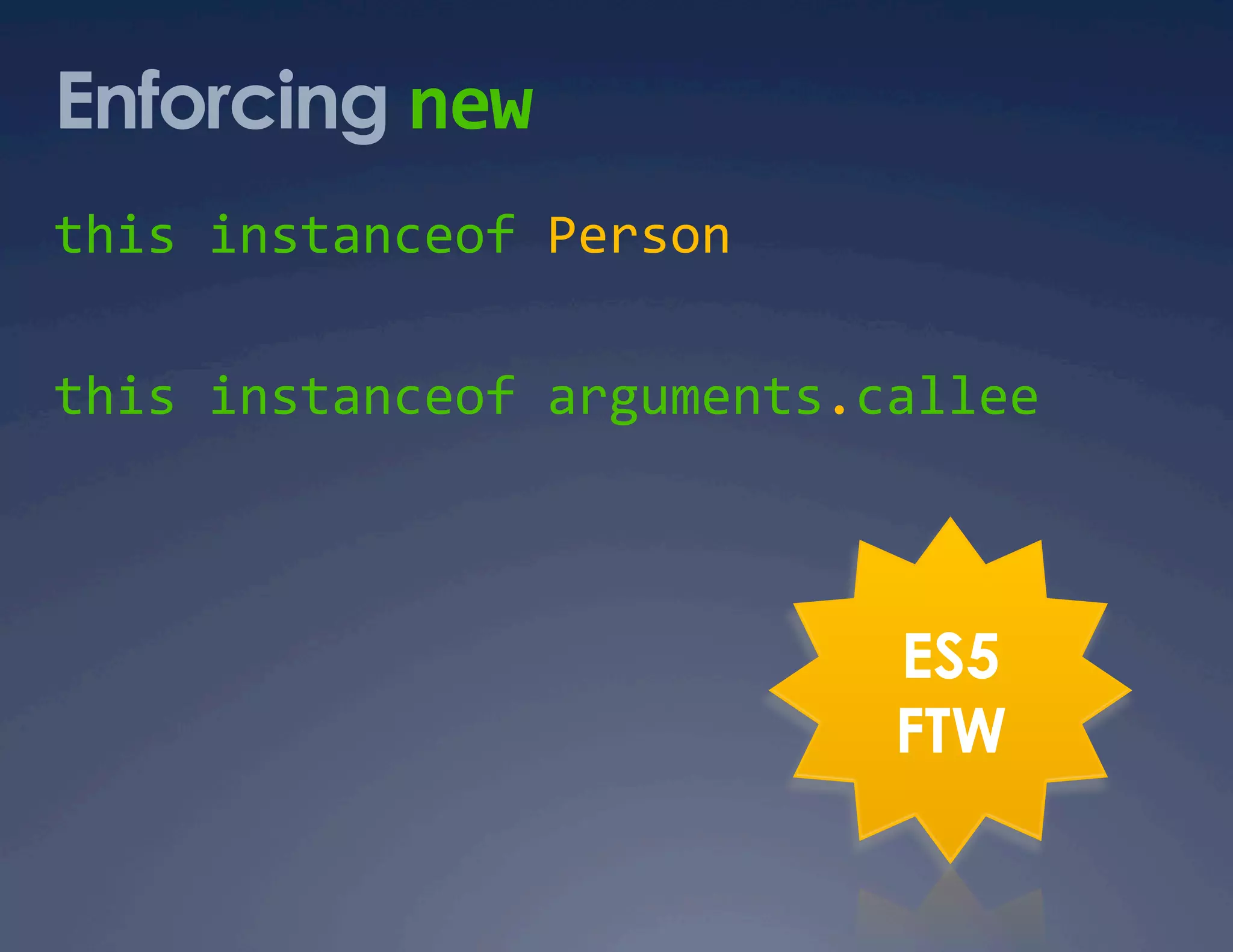
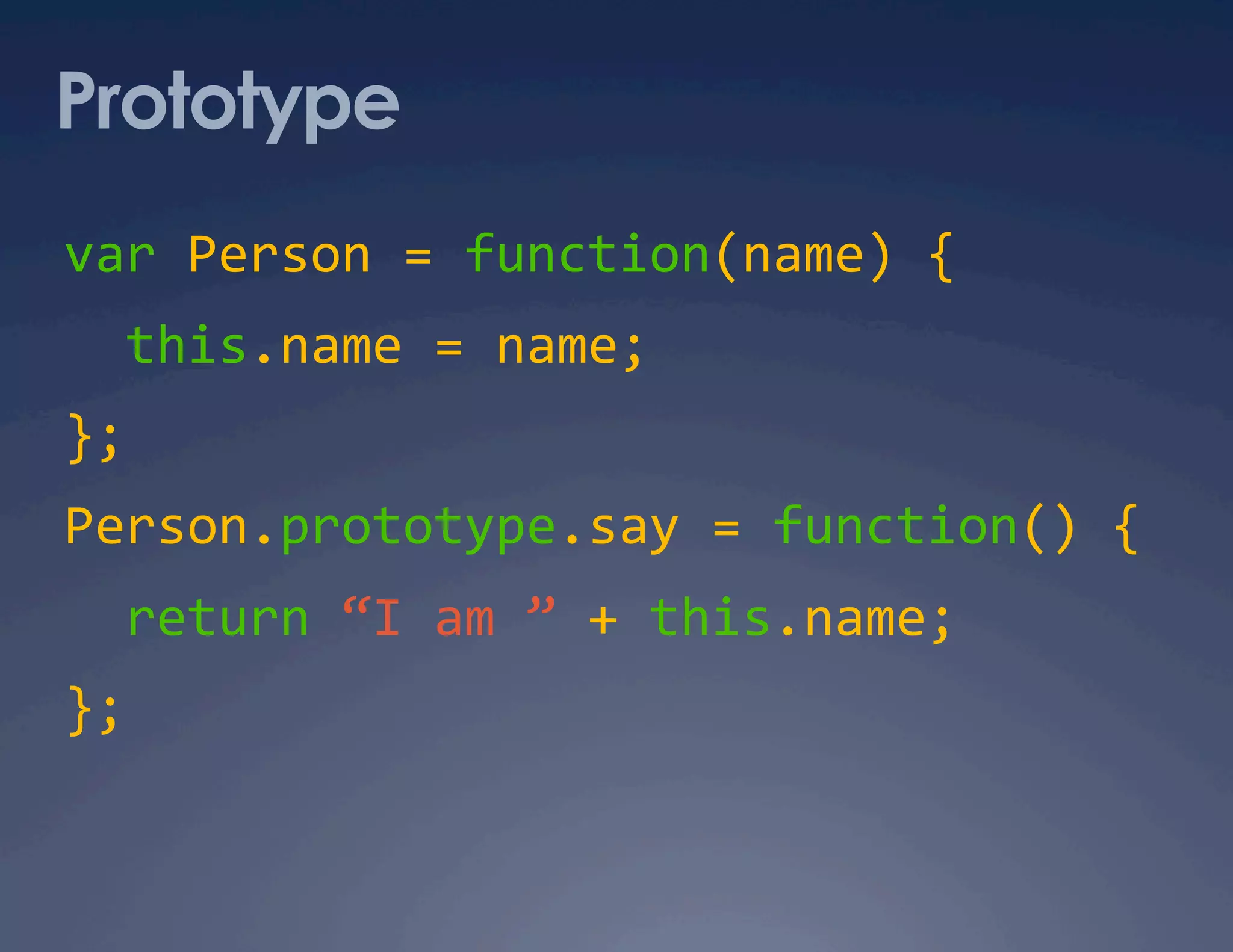

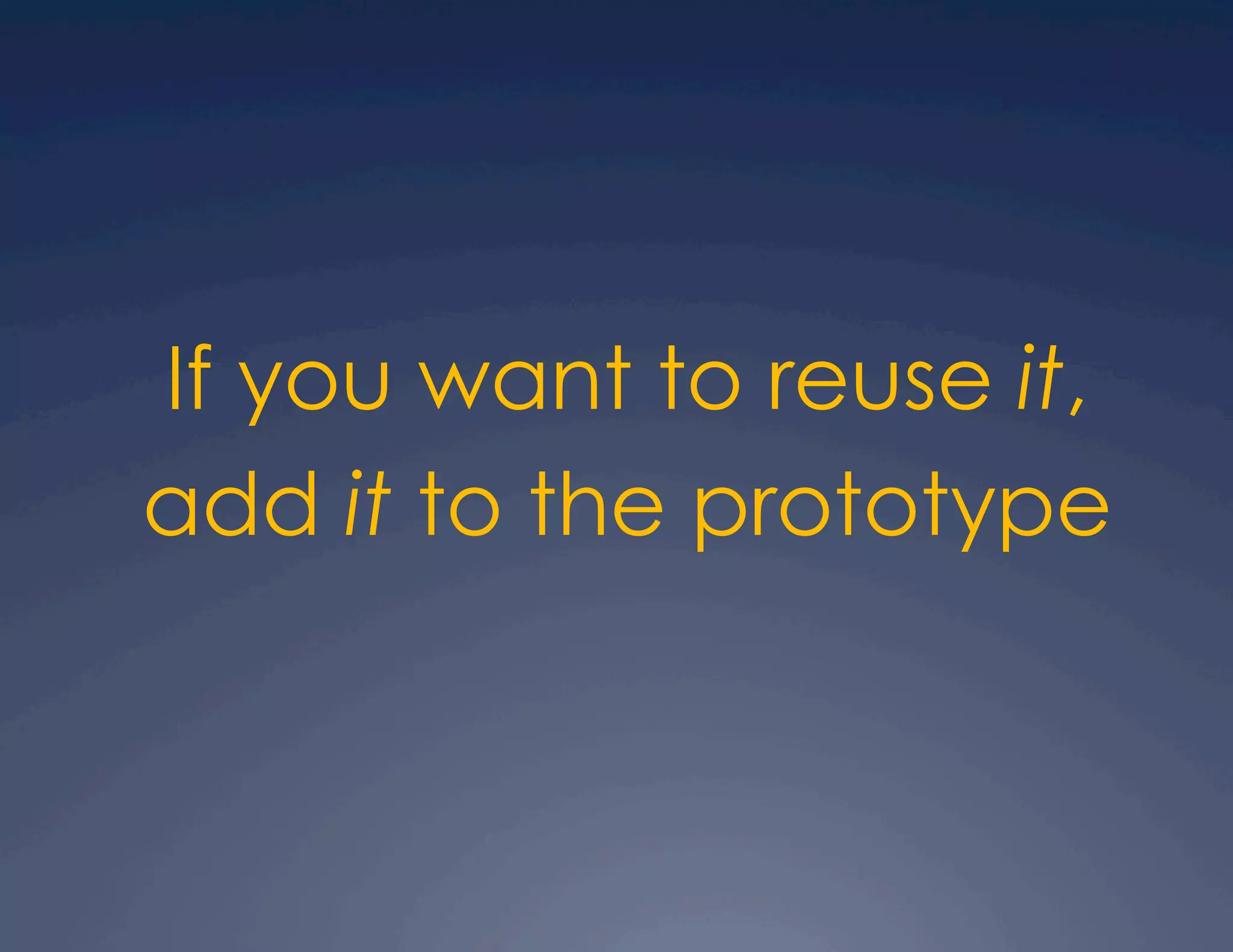
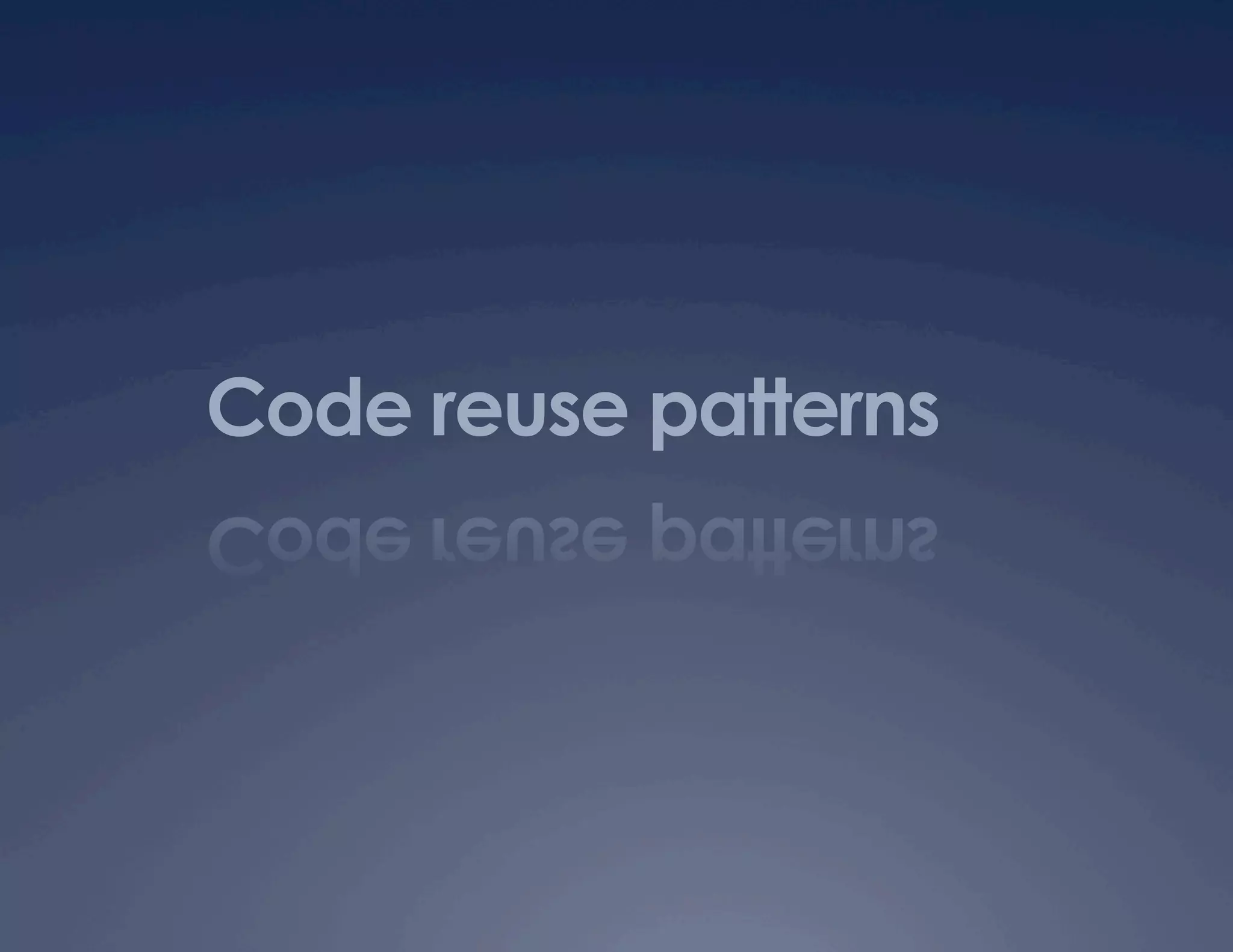
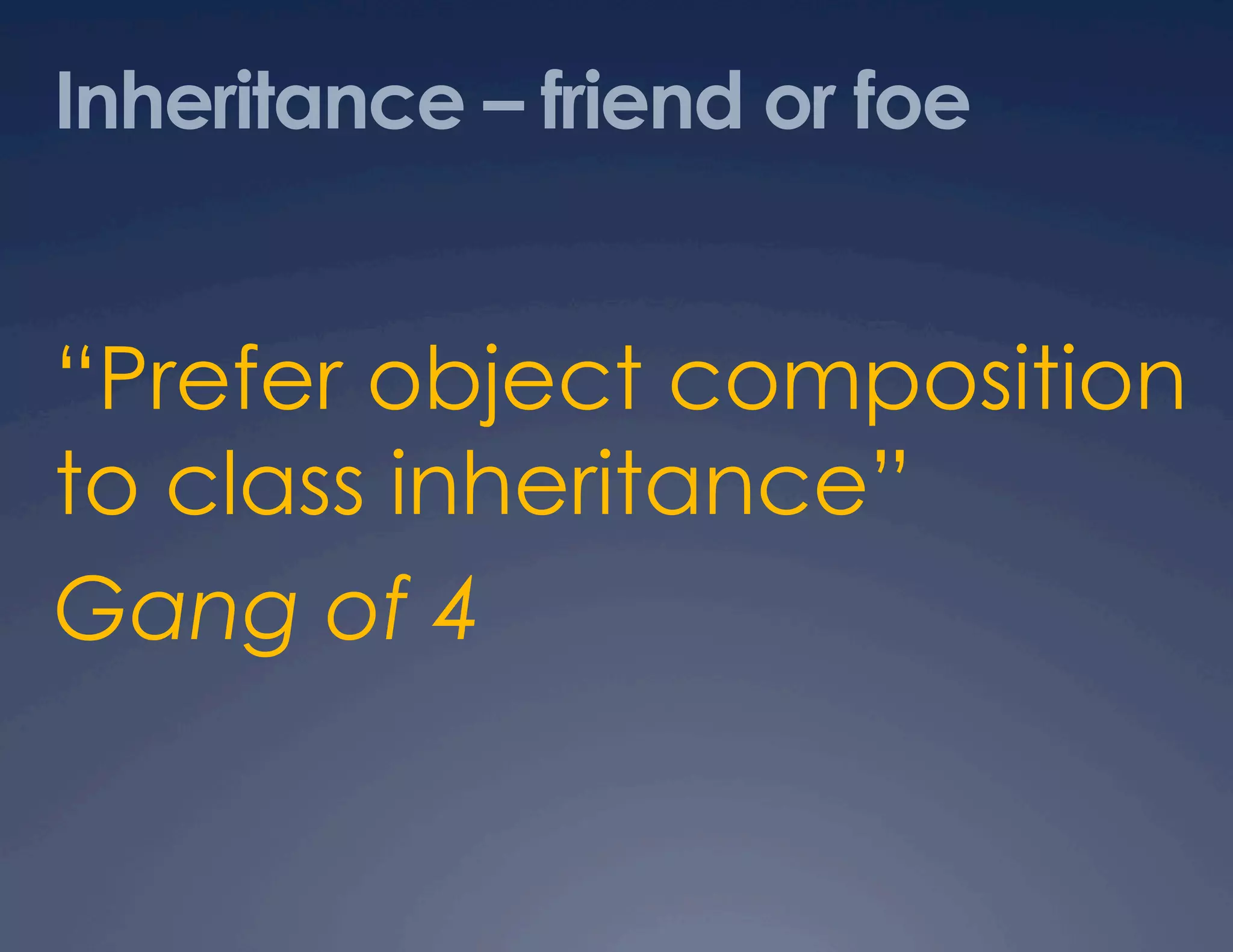

![Borrowing methods pattern • call() and apply() notmyobj.doStuff.call(myobj, param1, p2, p3) notmyobj.doStuff.apply(myobj, [param1, p2, p3])](https://image.slidesharecdn.com/javascript-patterns-090918194552-phpapp01/75/JavaScript-Patterns-23-2048.jpg)
![Example: borrowing from Array function f() { var args = [].slice.call(arguments, 1, 3); return args; } >>> f(1, 2, 3, 4, 5, 6) 2,3 [].slice.call can also be Array.prototype.slice.call](https://image.slidesharecdn.com/javascript-patterns-090918194552-phpapp01/75/JavaScript-Patterns-24-2048.jpg)
![Inheritance by copying properties function extend(parent, child) { var i, child = child || {}; for (i in parent) { child[i] = parent[i]; } return child; }](https://image.slidesharecdn.com/javascript-patterns-090918194552-phpapp01/75/JavaScript-Patterns-25-2048.jpg)
![Mixins function mixInThese() { var arg, prop, child = {}; for (arg = 0; arg < arguments.length; arg++) { for (prop in arguments[arg]) { child[prop] = arguments[arg][prop]; } } return child; }](https://image.slidesharecdn.com/javascript-patterns-090918194552-phpapp01/75/JavaScript-Patterns-26-2048.jpg)
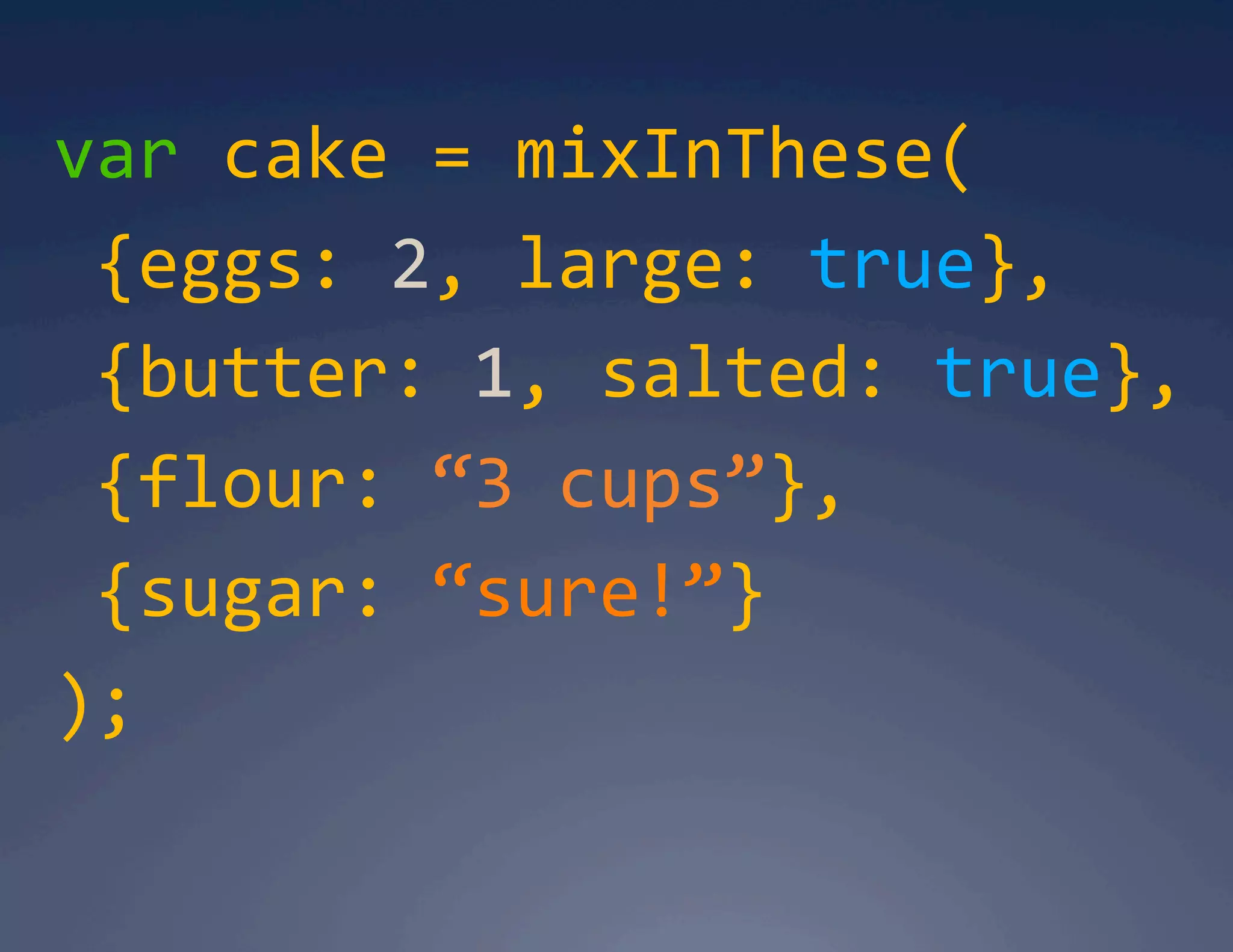
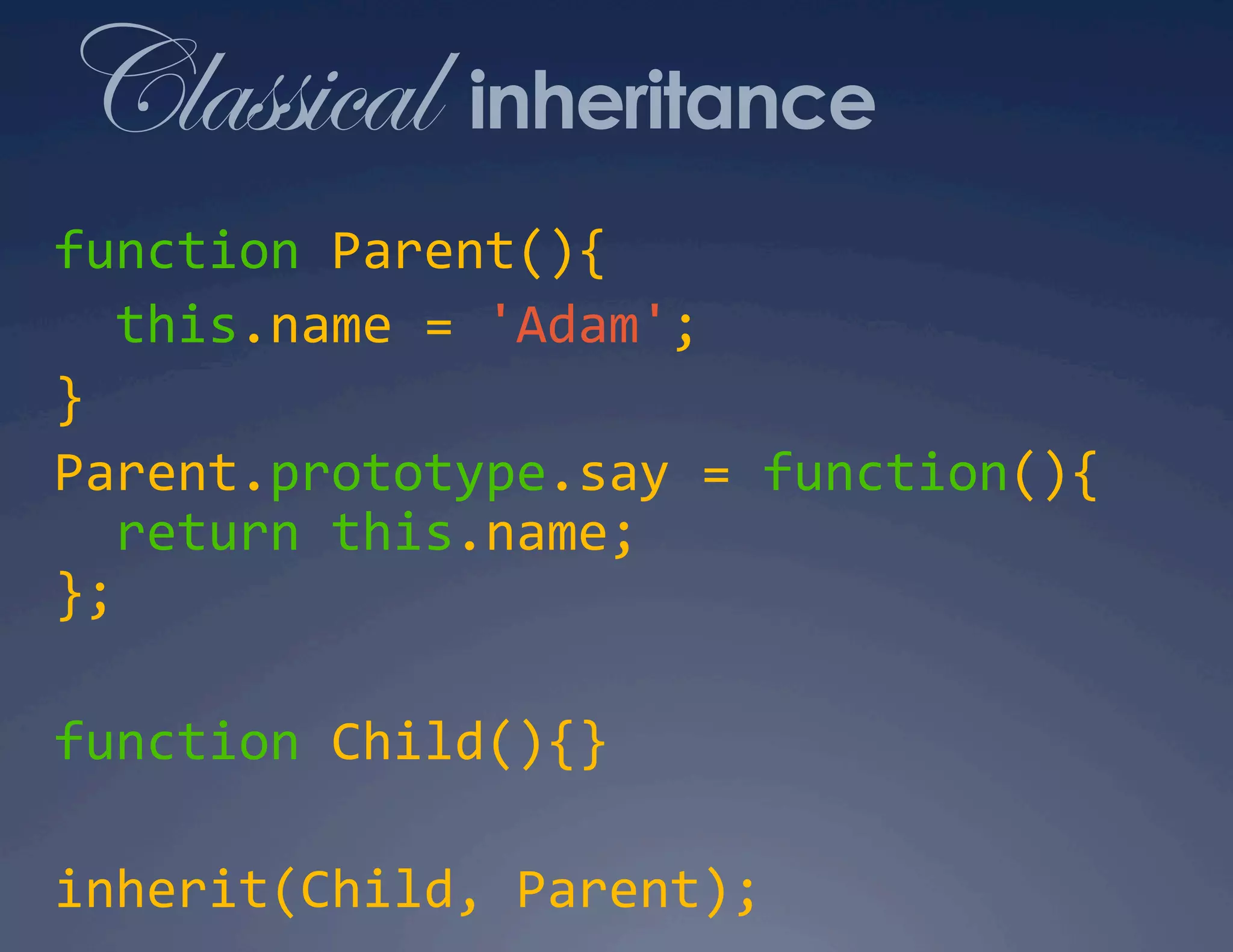

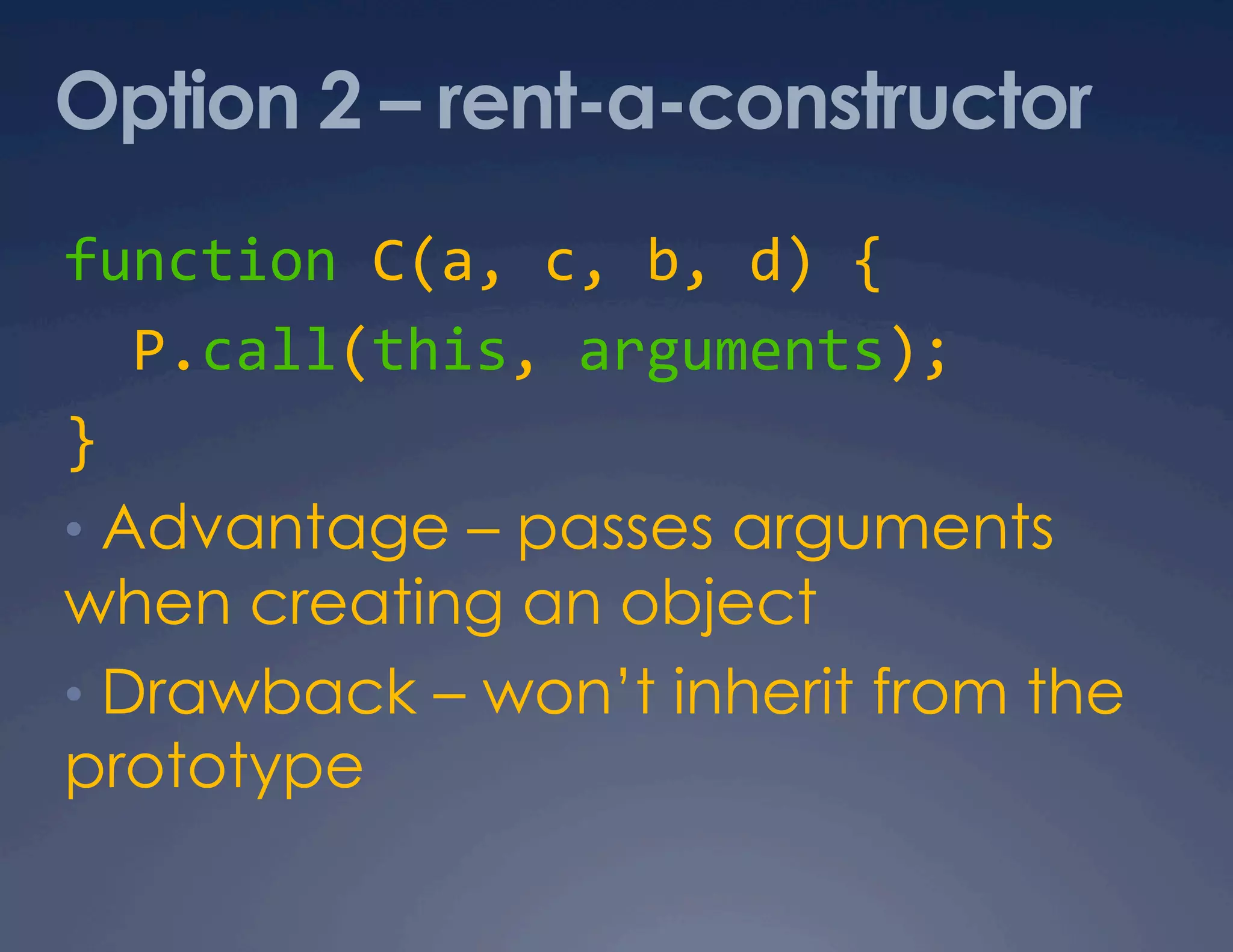
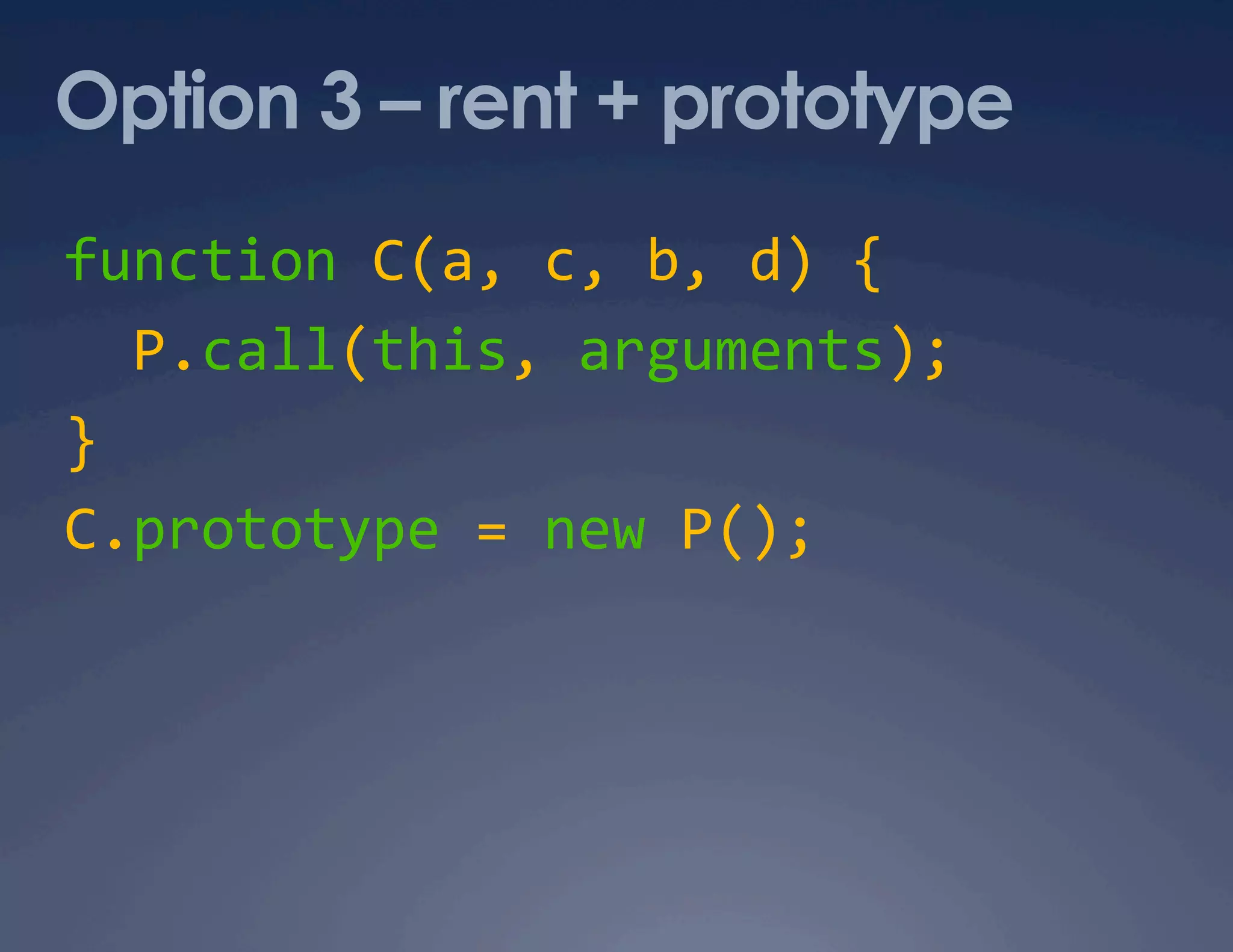
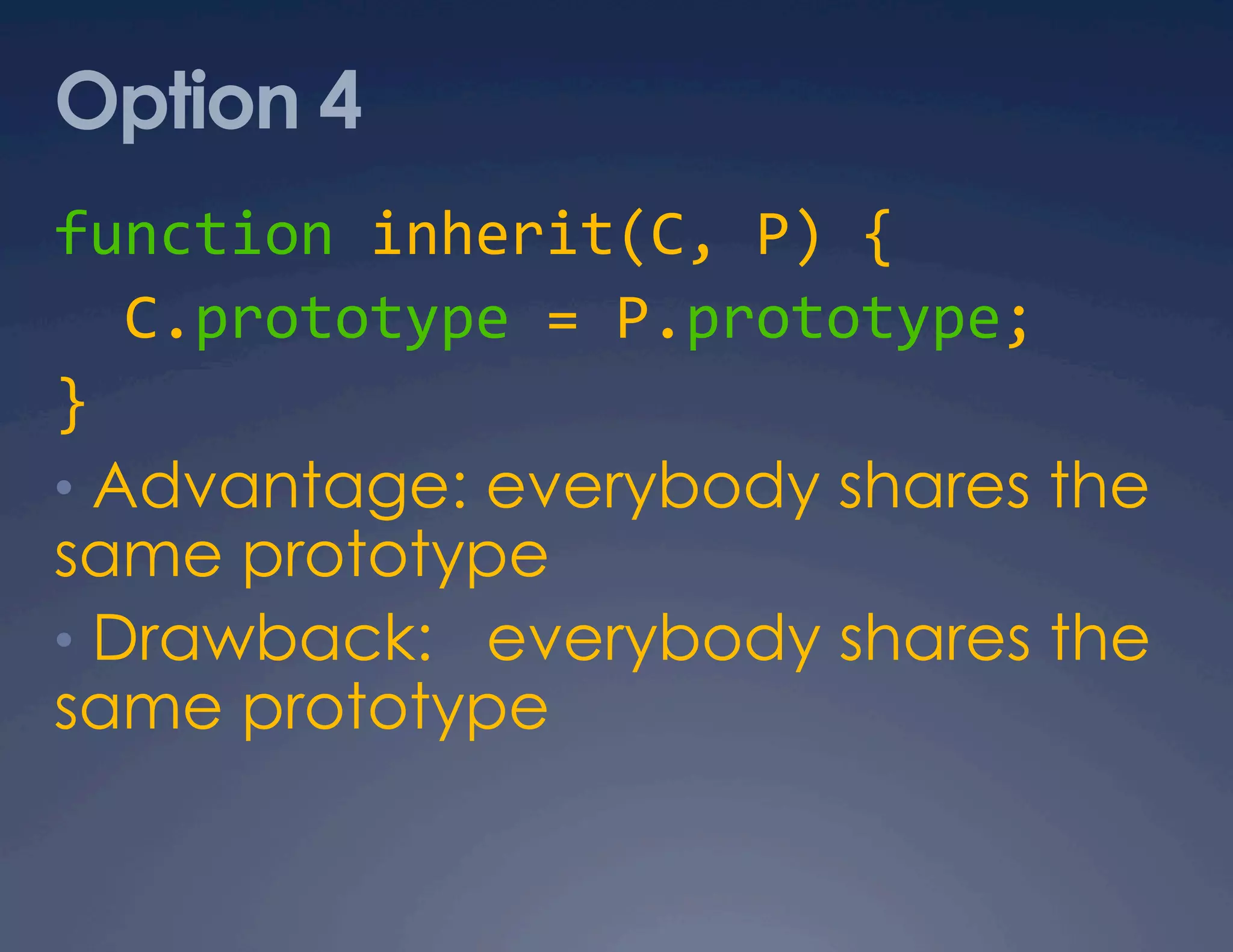
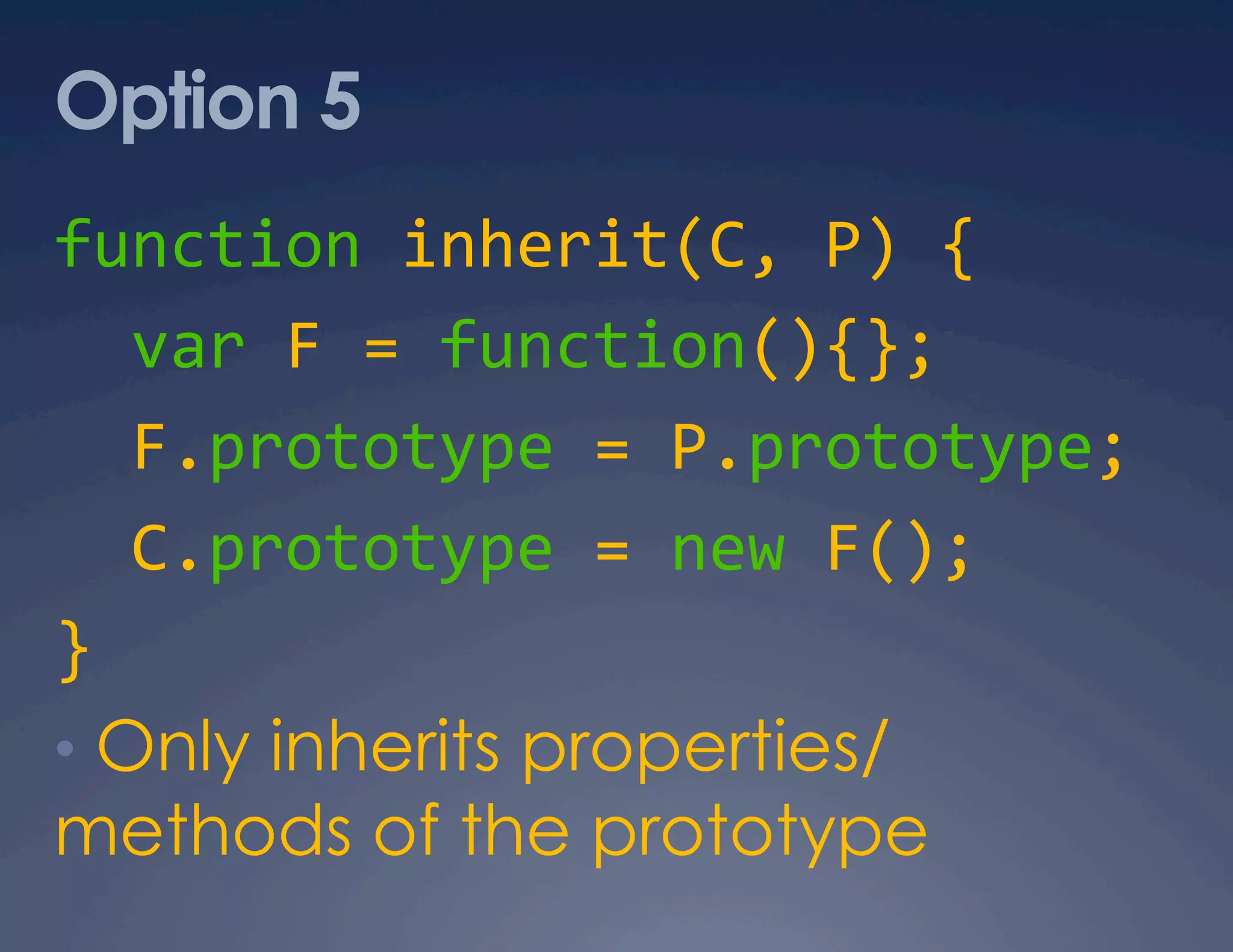
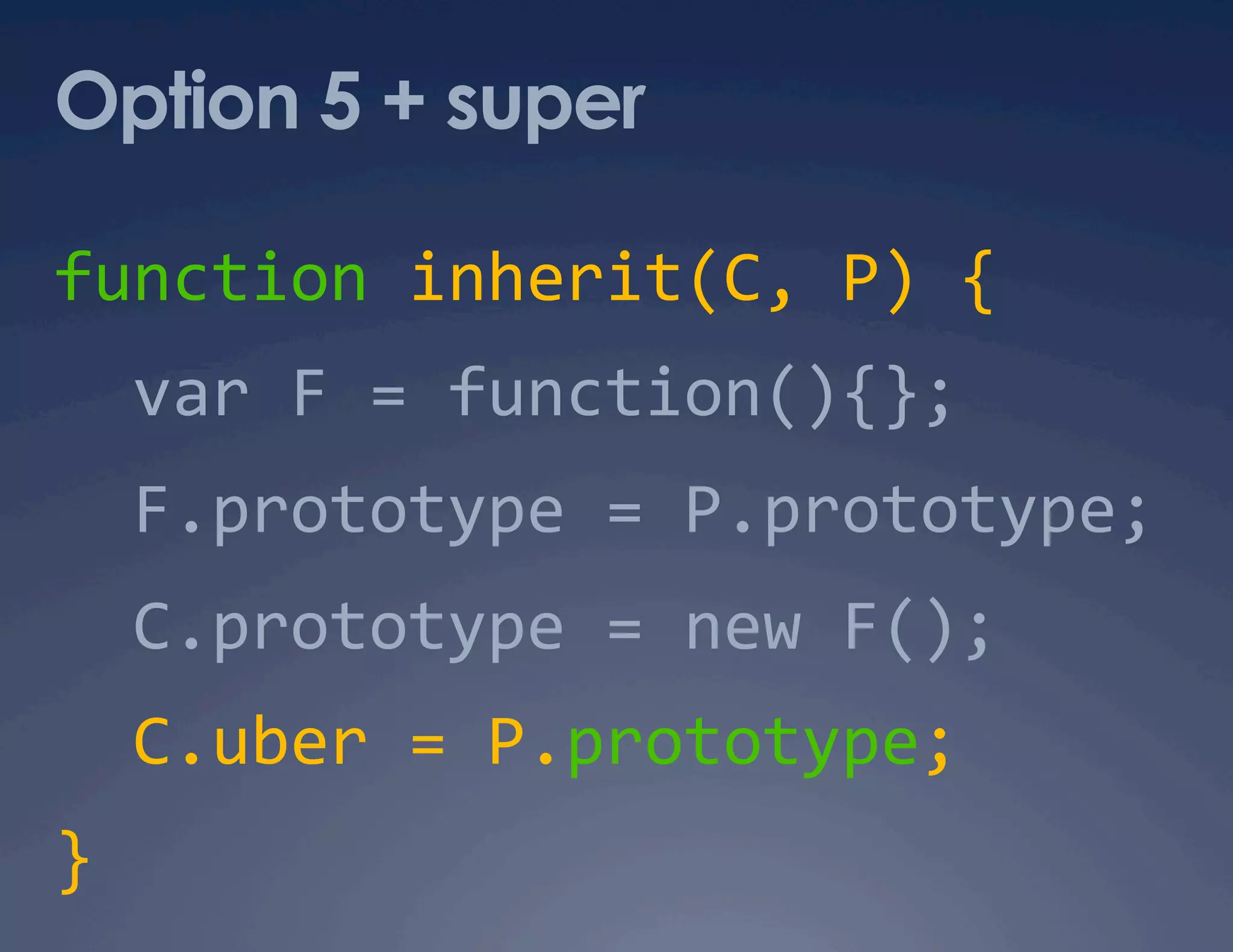
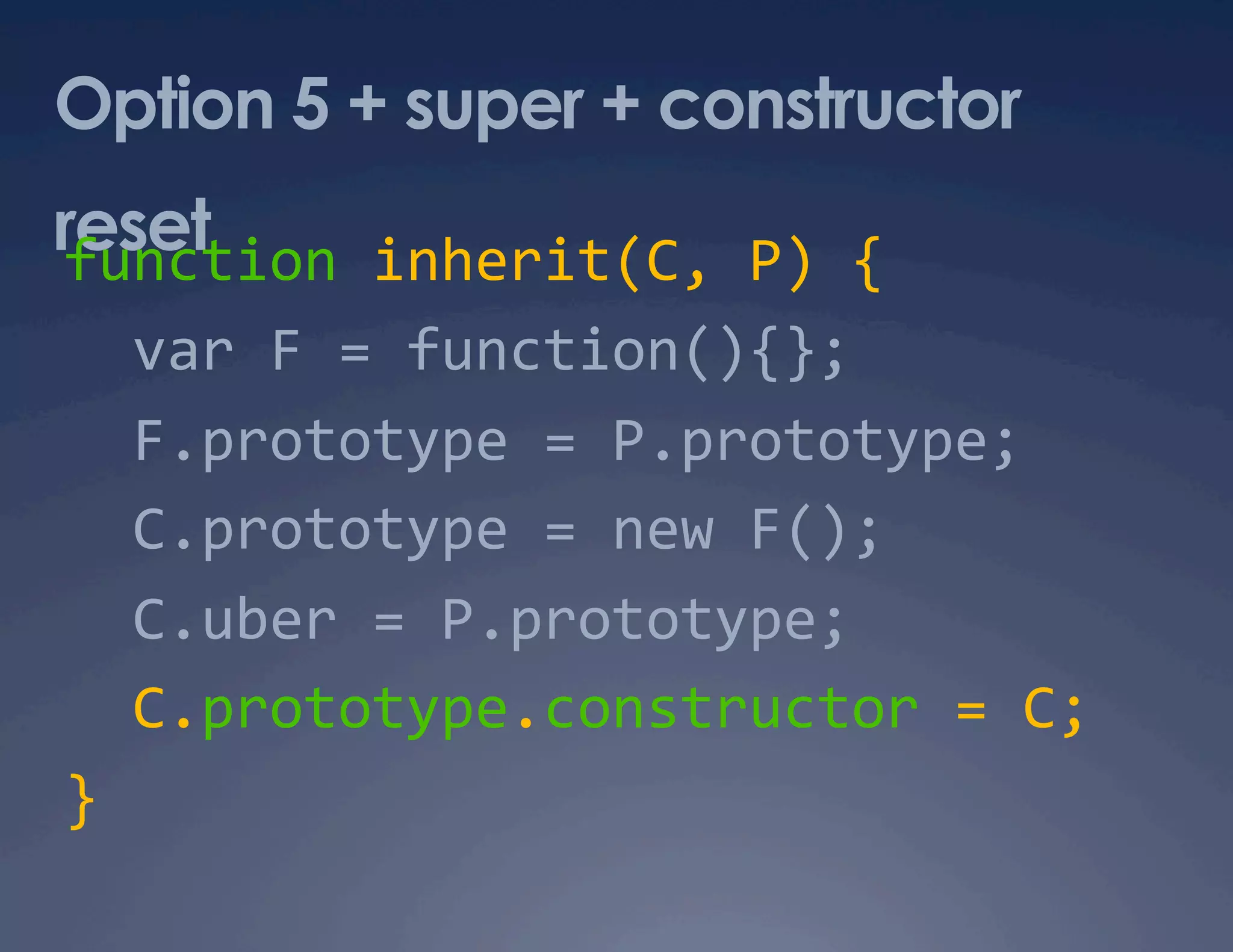
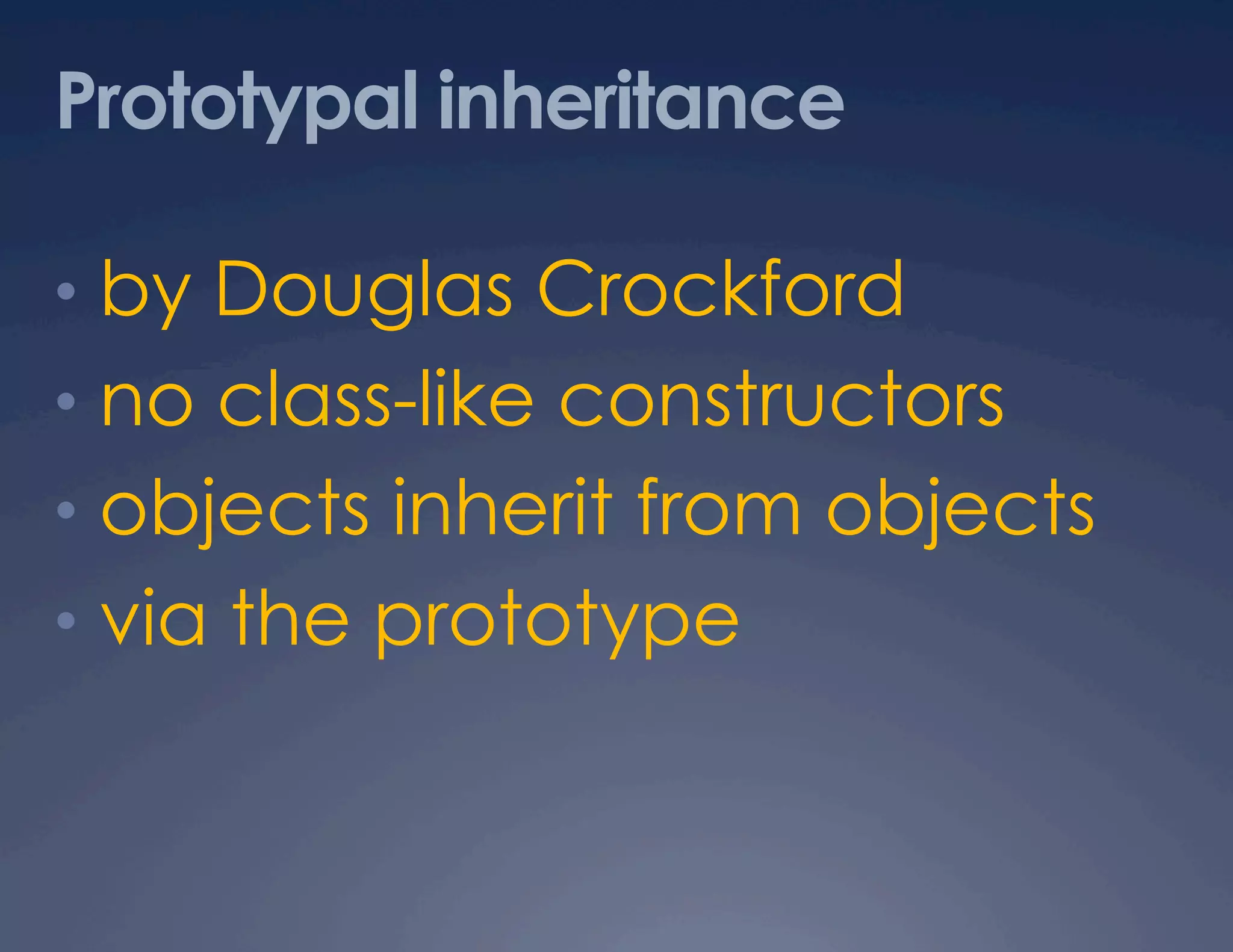
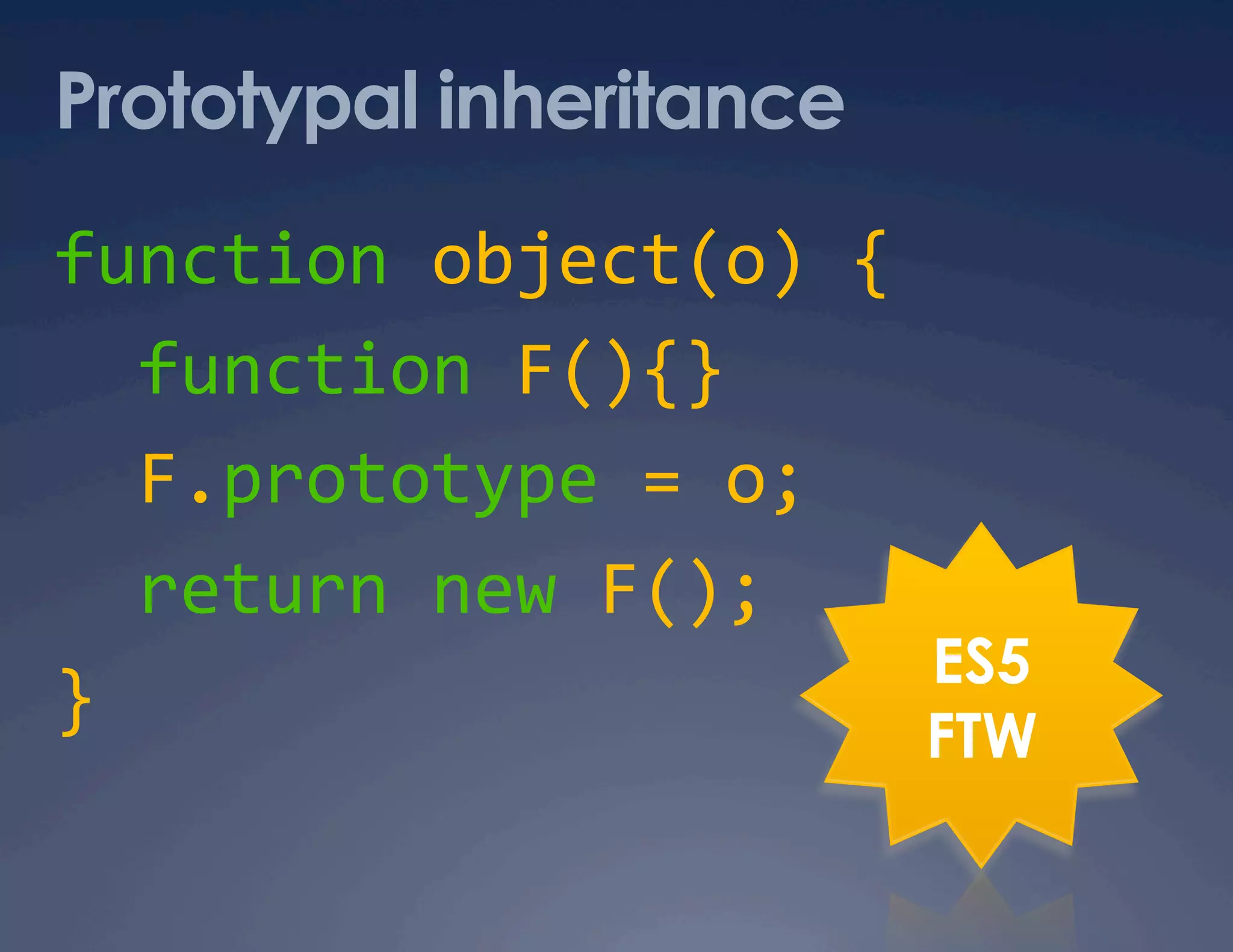
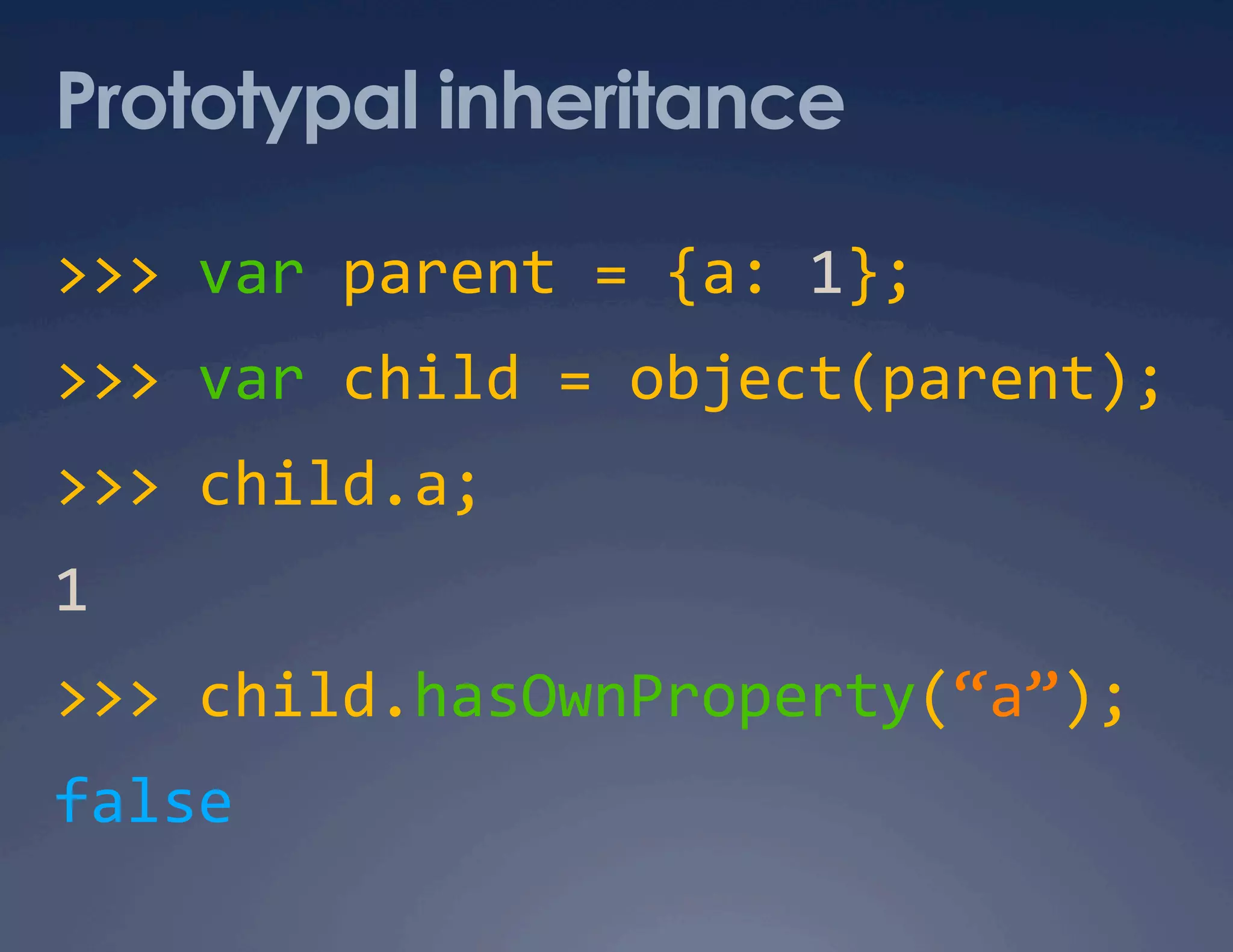


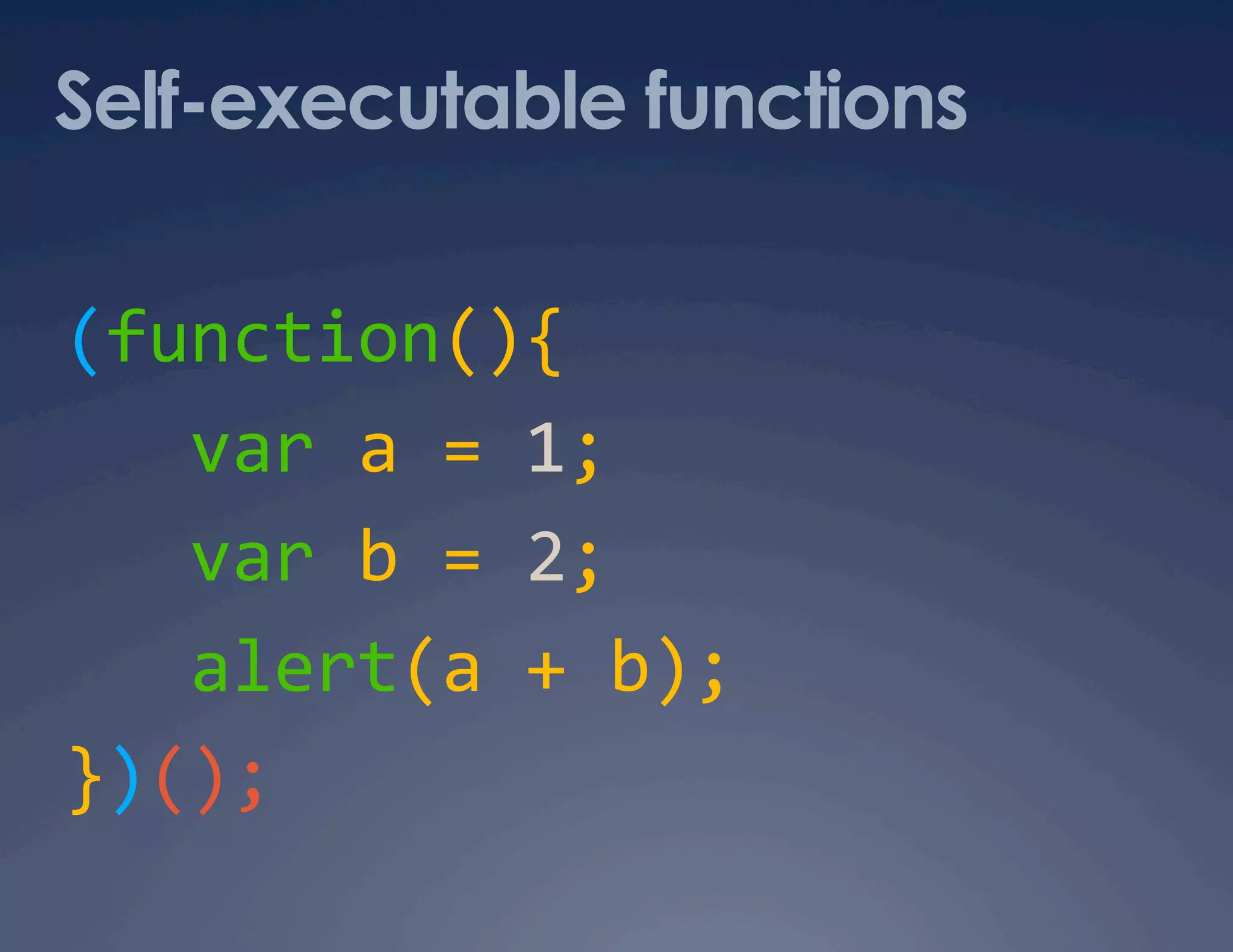
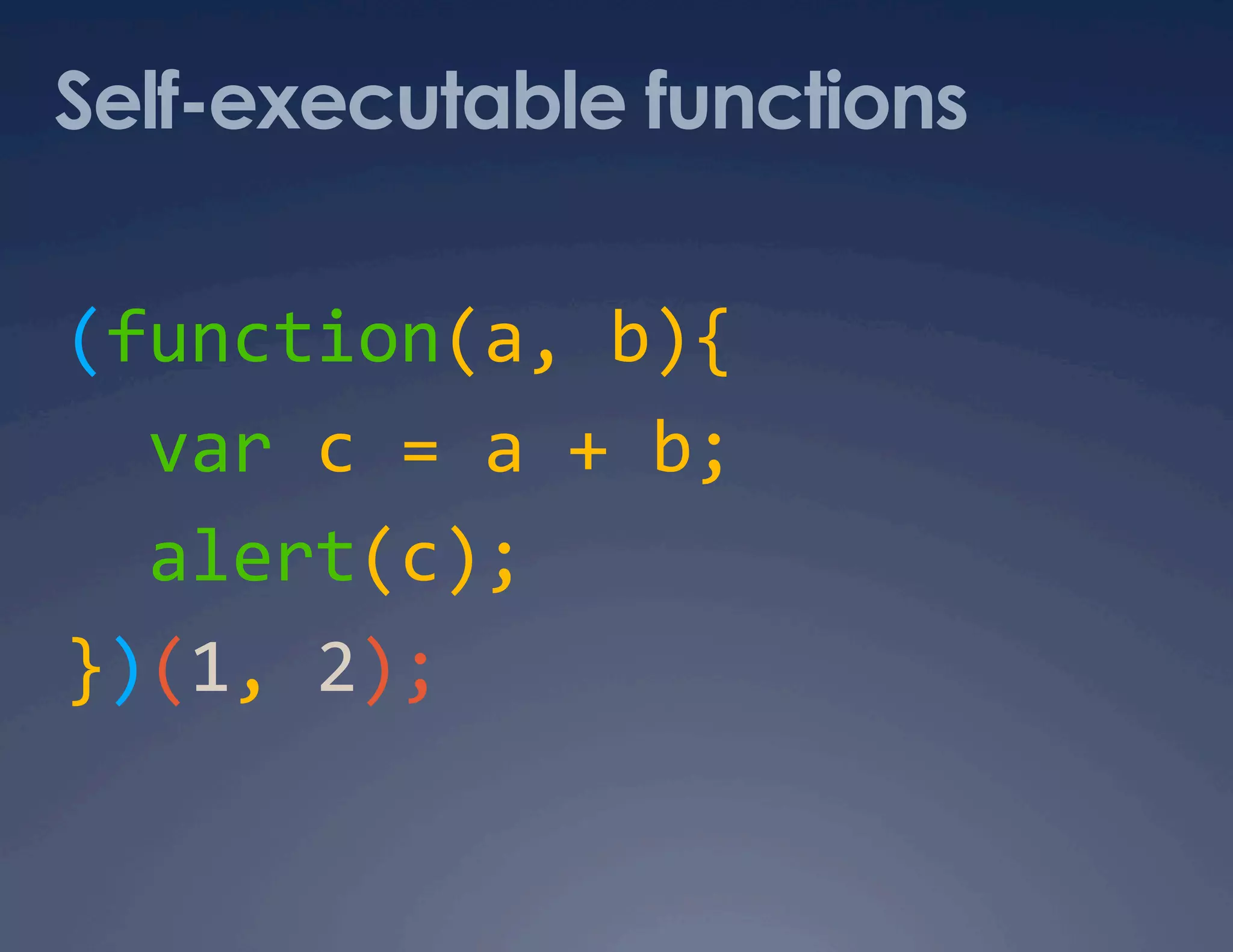
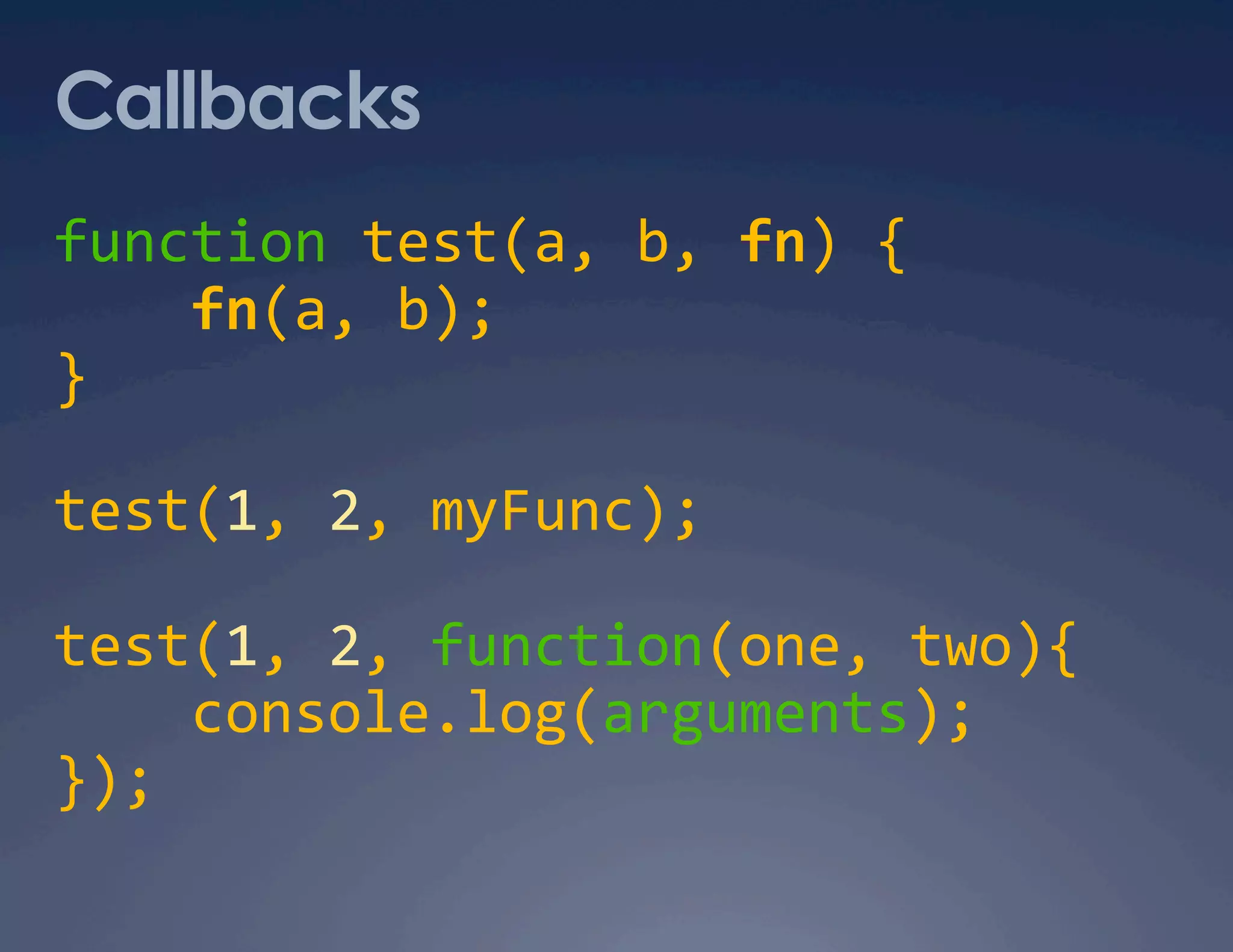
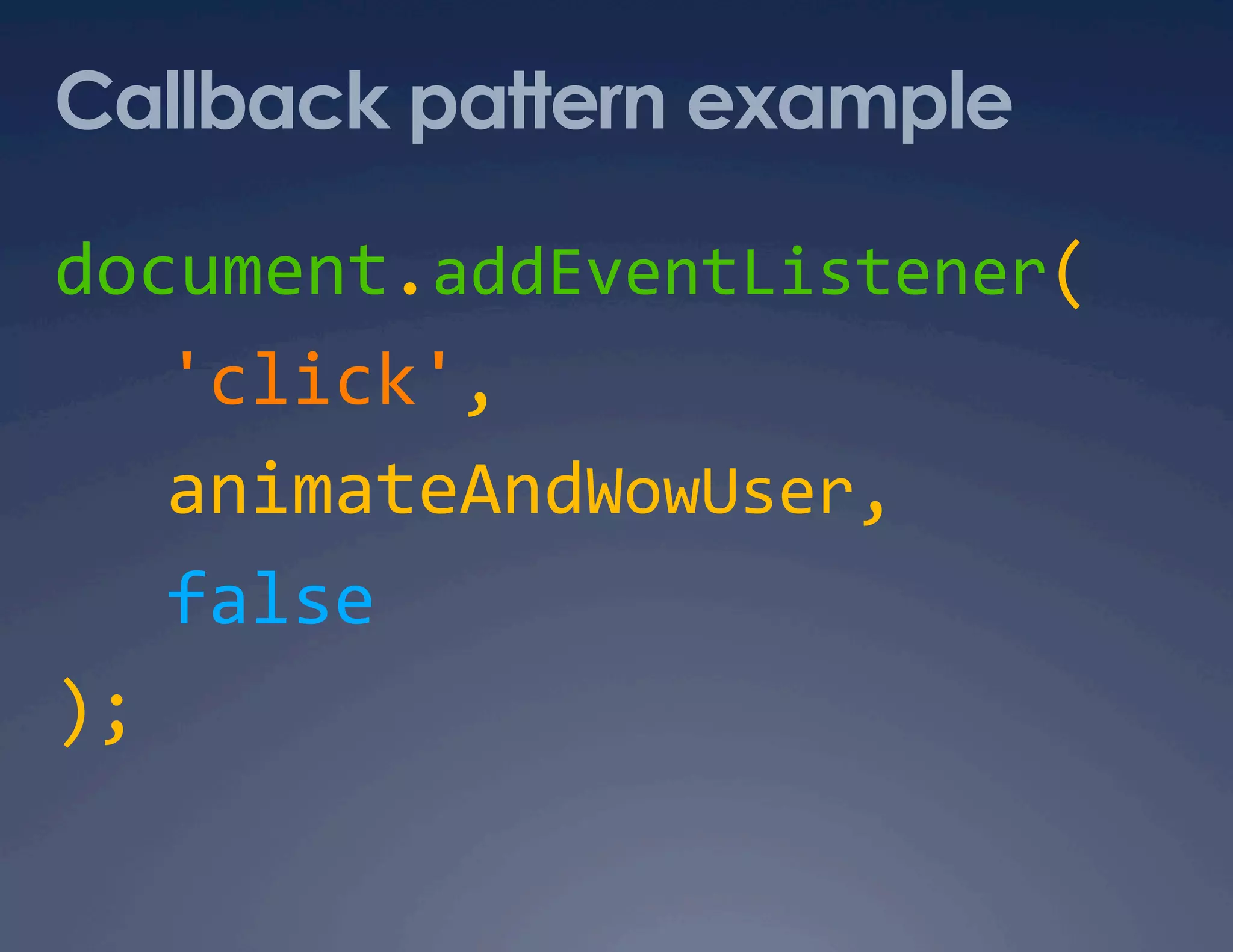
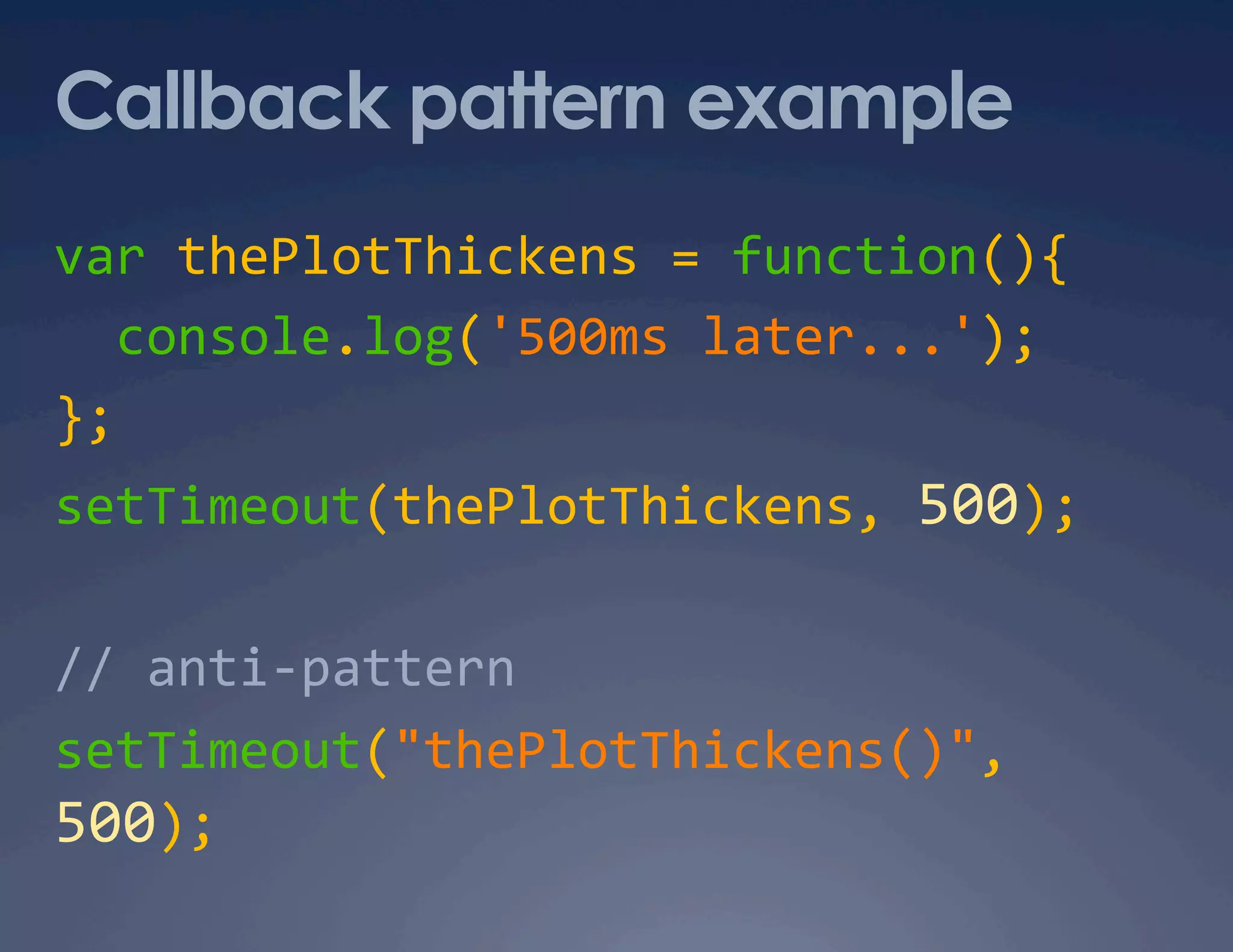
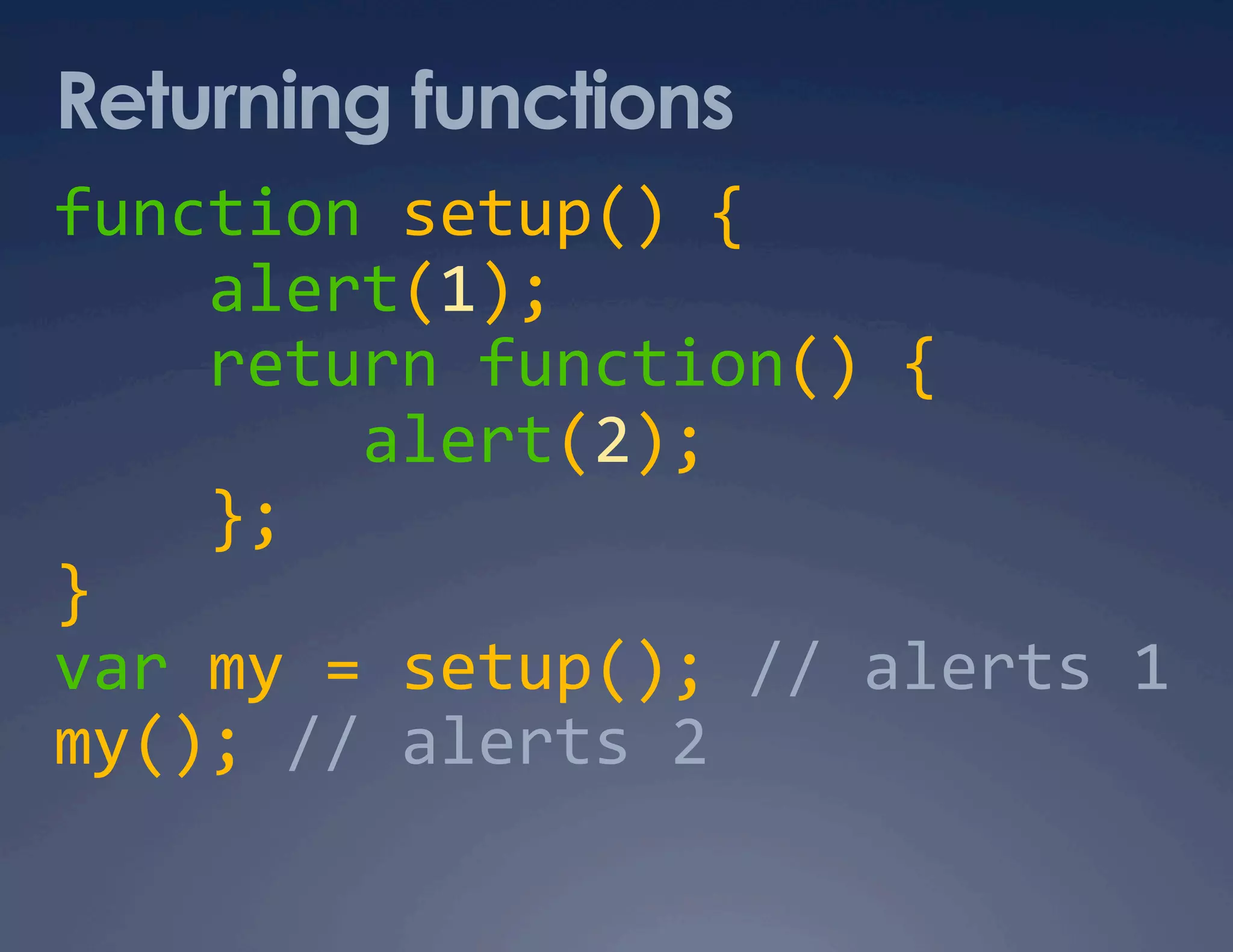
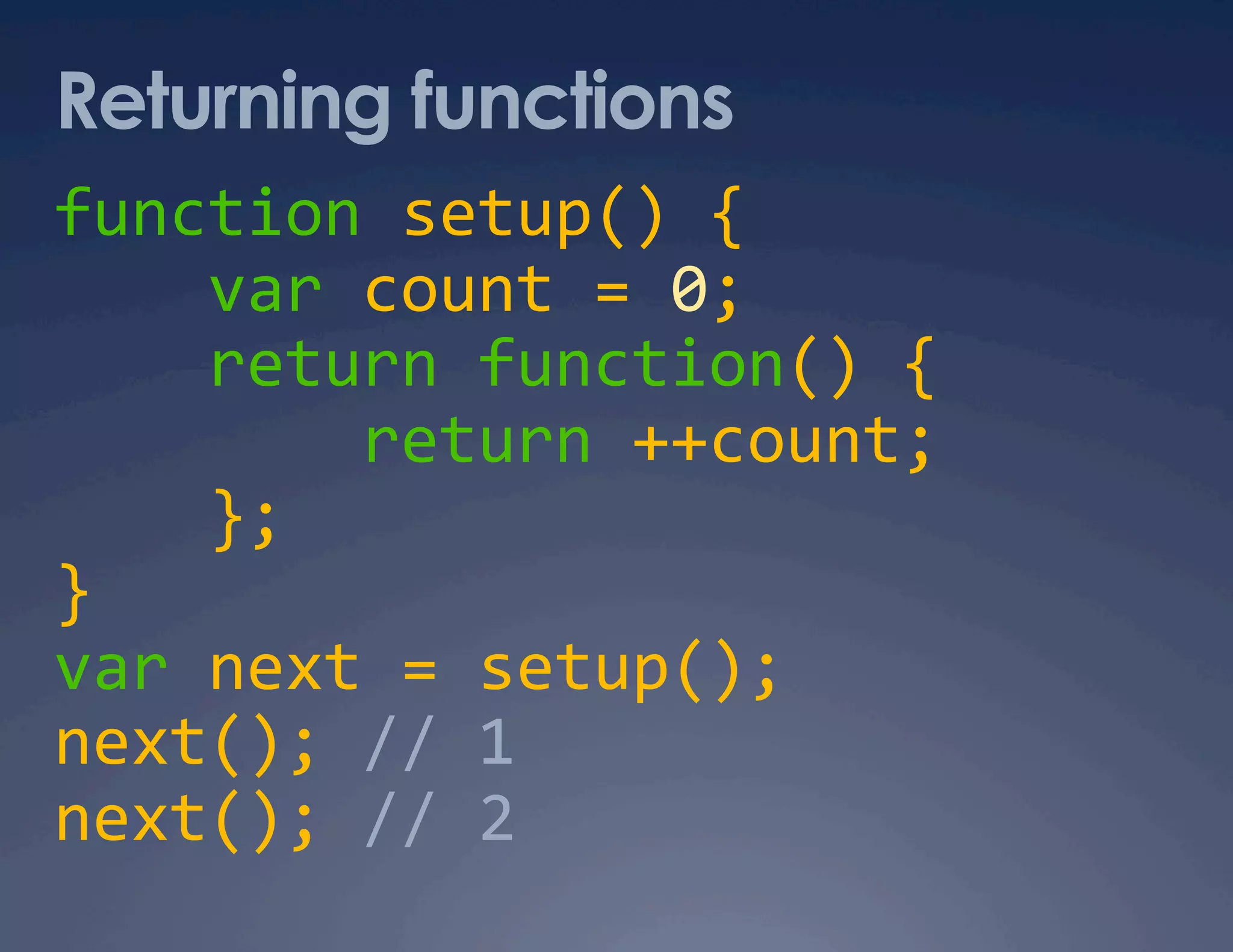
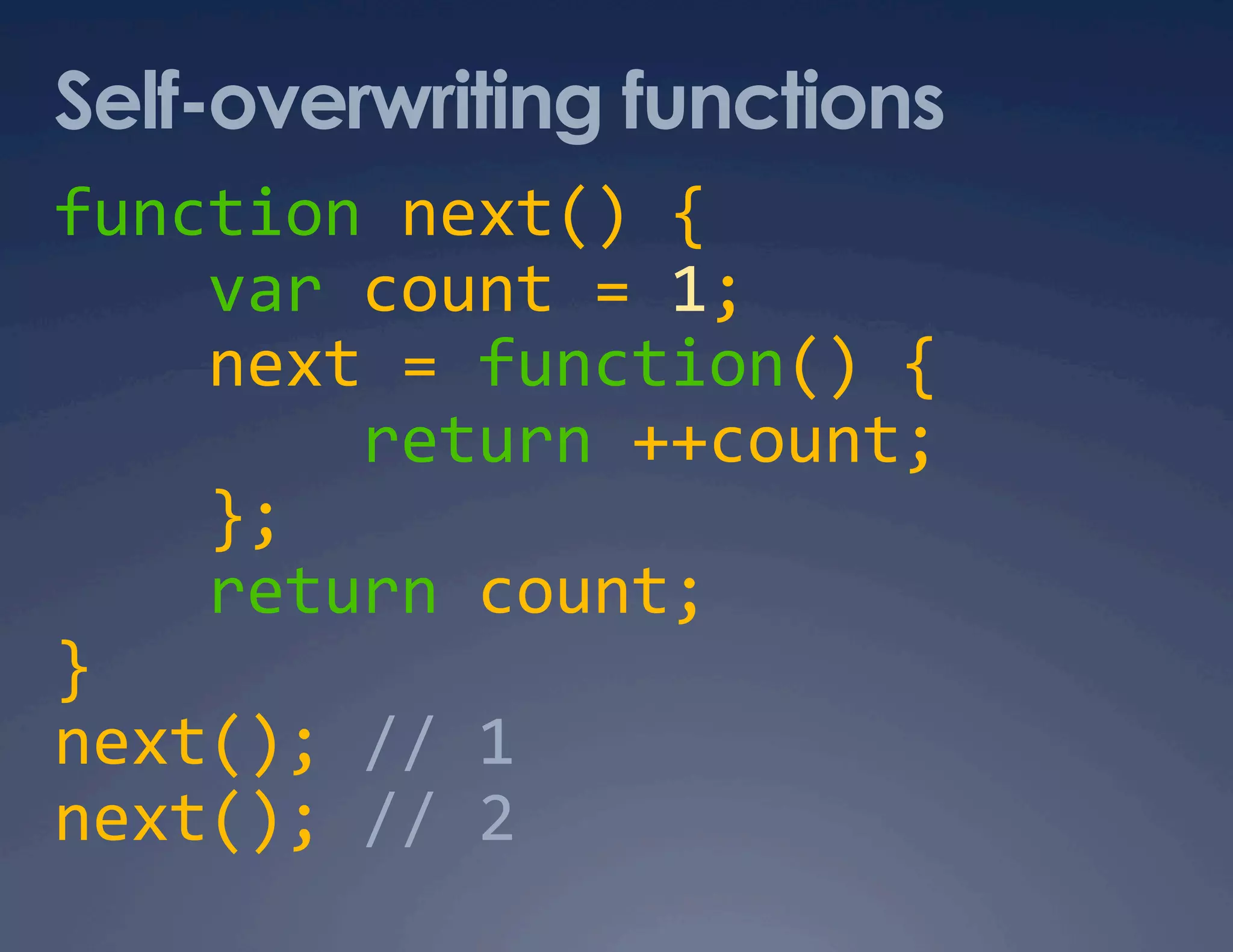
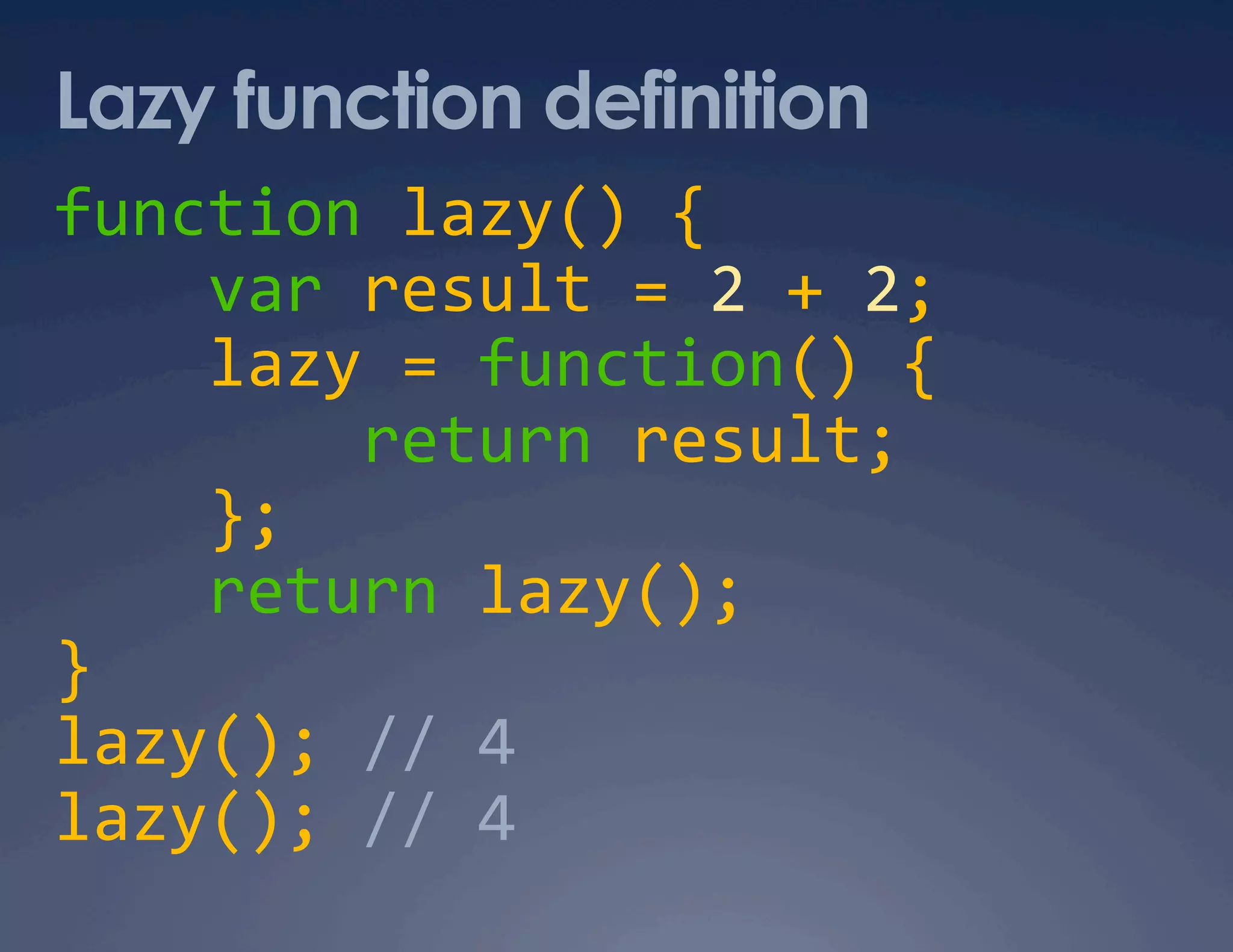
![Function properties function myFunc(param){ if (!myFunc.cache) { myFunc.cache = {}; } if (!myFunc.cache[param]) { var result = {}; // … myFunc.cache[param] = result; } return myFunc.cache[param]; }](https://image.slidesharecdn.com/javascript-patterns-090918194552-phpapp01/75/JavaScript-Patterns-50-2048.jpg)
![Init-time branching // BEFORE var addListener = function(el, type, fn) { // w3c if (typeof window.addEventListener === 'function') { el.addEventListener(type, fn, false); // IE } else if (typeof document.attachEvent === 'function') { el.attachEvent('on' + type, fn); // older browsers } else { el['on' + type] = fn; } };](https://image.slidesharecdn.com/javascript-patterns-090918194552-phpapp01/75/JavaScript-Patterns-51-2048.jpg)
![Init-time branching var addListener; if (typeof window.addEventListener === 'function') { addListener = function(el, type, fn) { el.addEventListener(type, fn, false); }; } else if (typeof document.attachEvent === 'function') { addListener = function(el, type, fn) { el.attachEvent('on' + type, fn); }; } else { addListener = function(el, type, fn) { el['on' + type] = fn; }; }](https://image.slidesharecdn.com/javascript-patterns-090918194552-phpapp01/75/JavaScript-Patterns-52-2048.jpg)

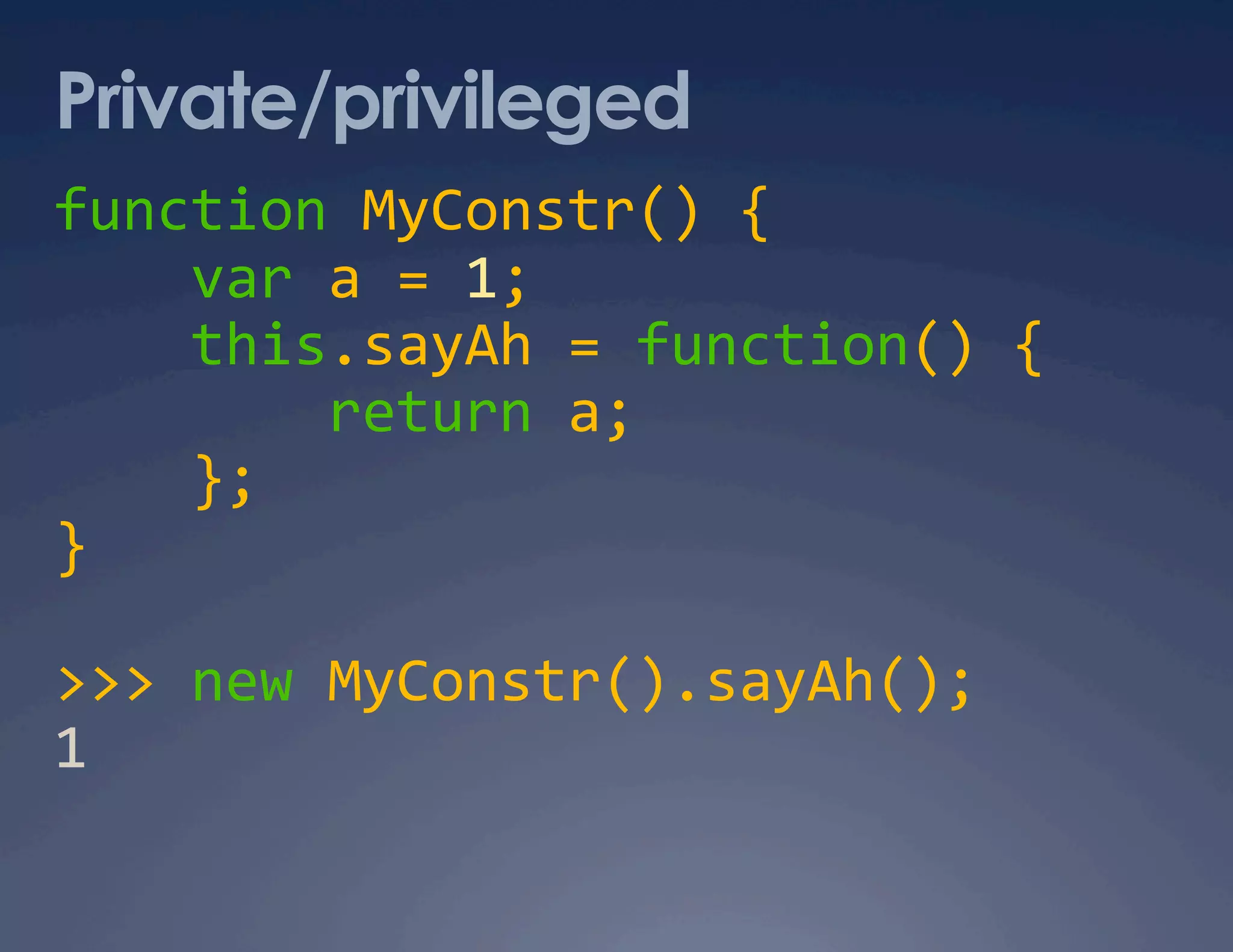
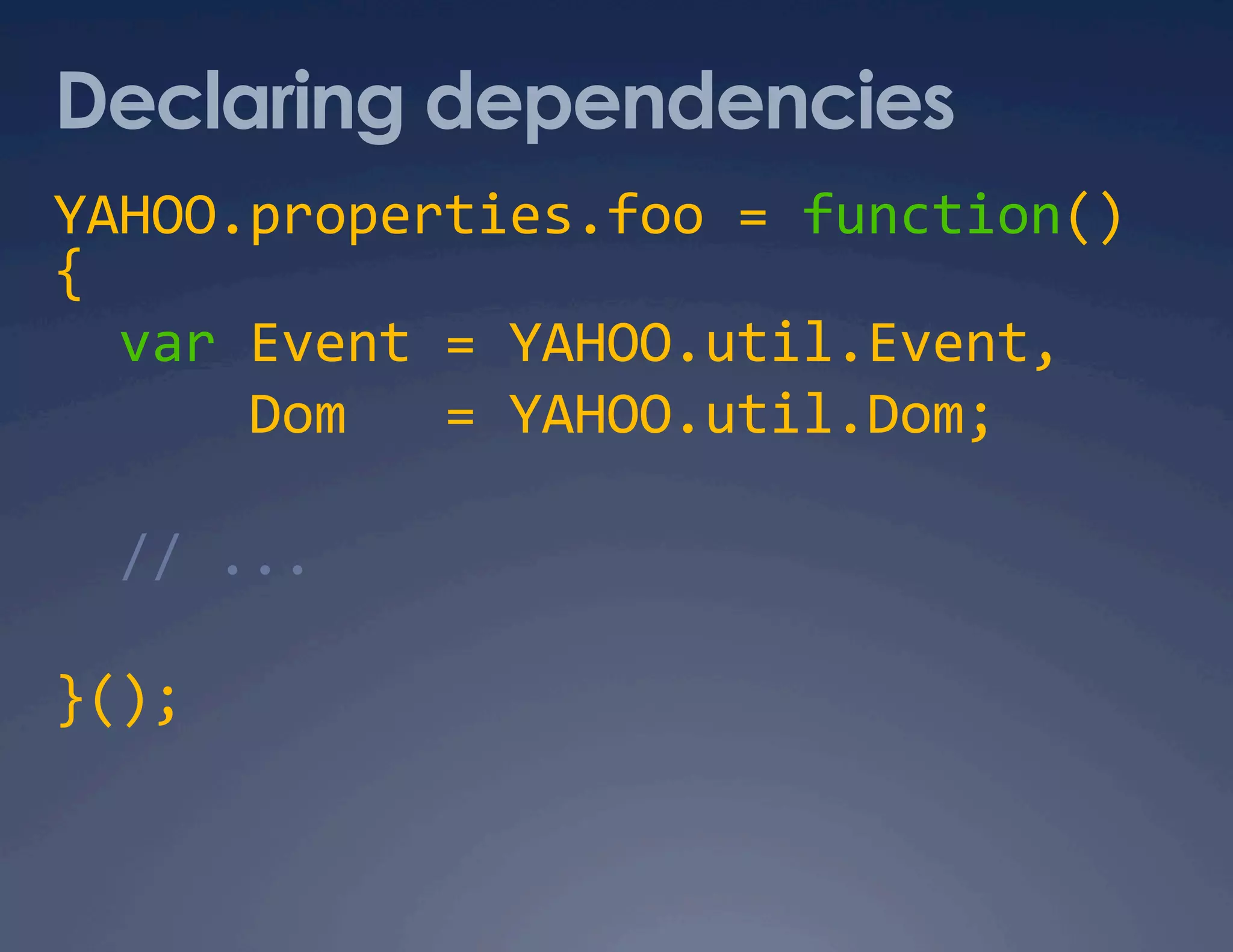
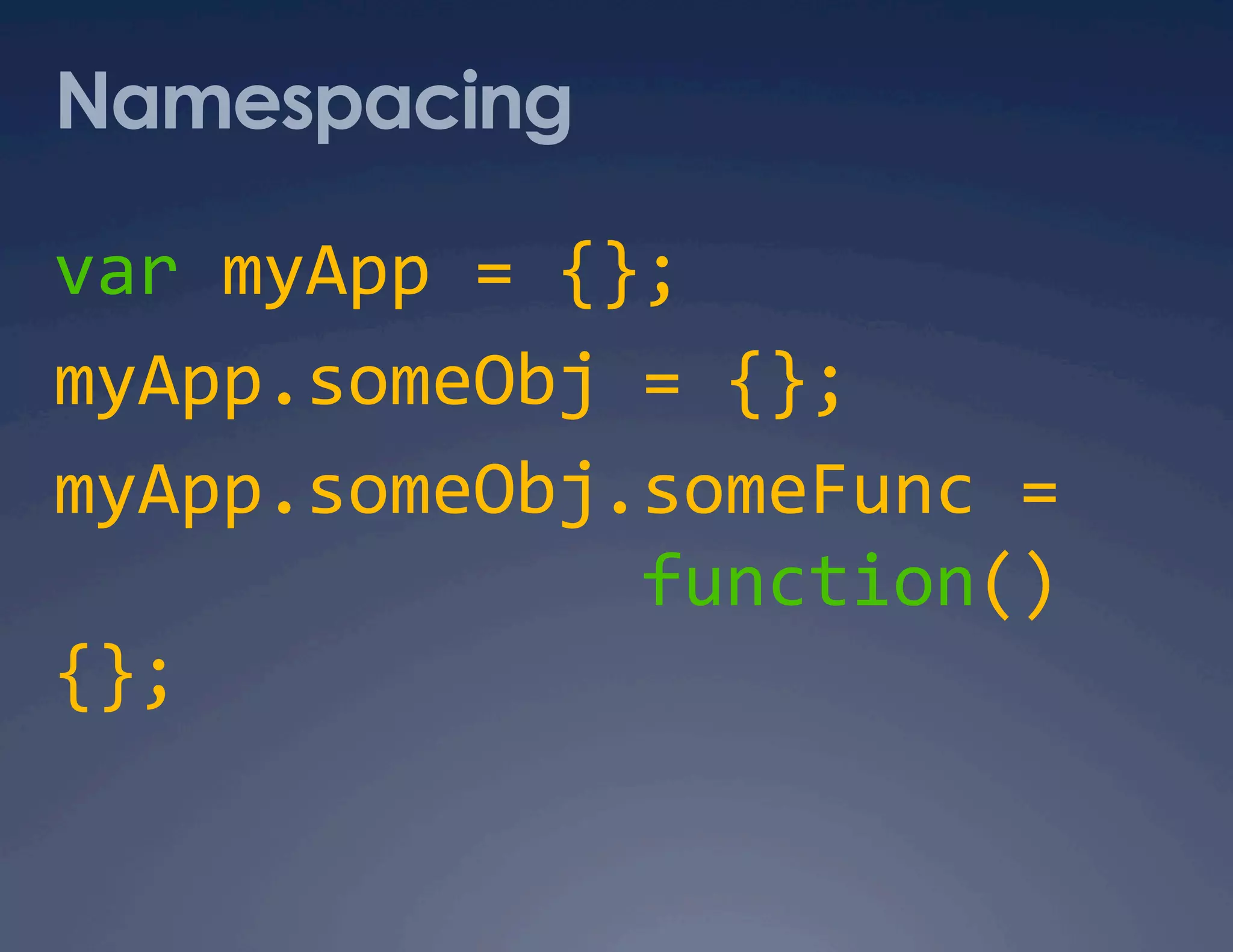
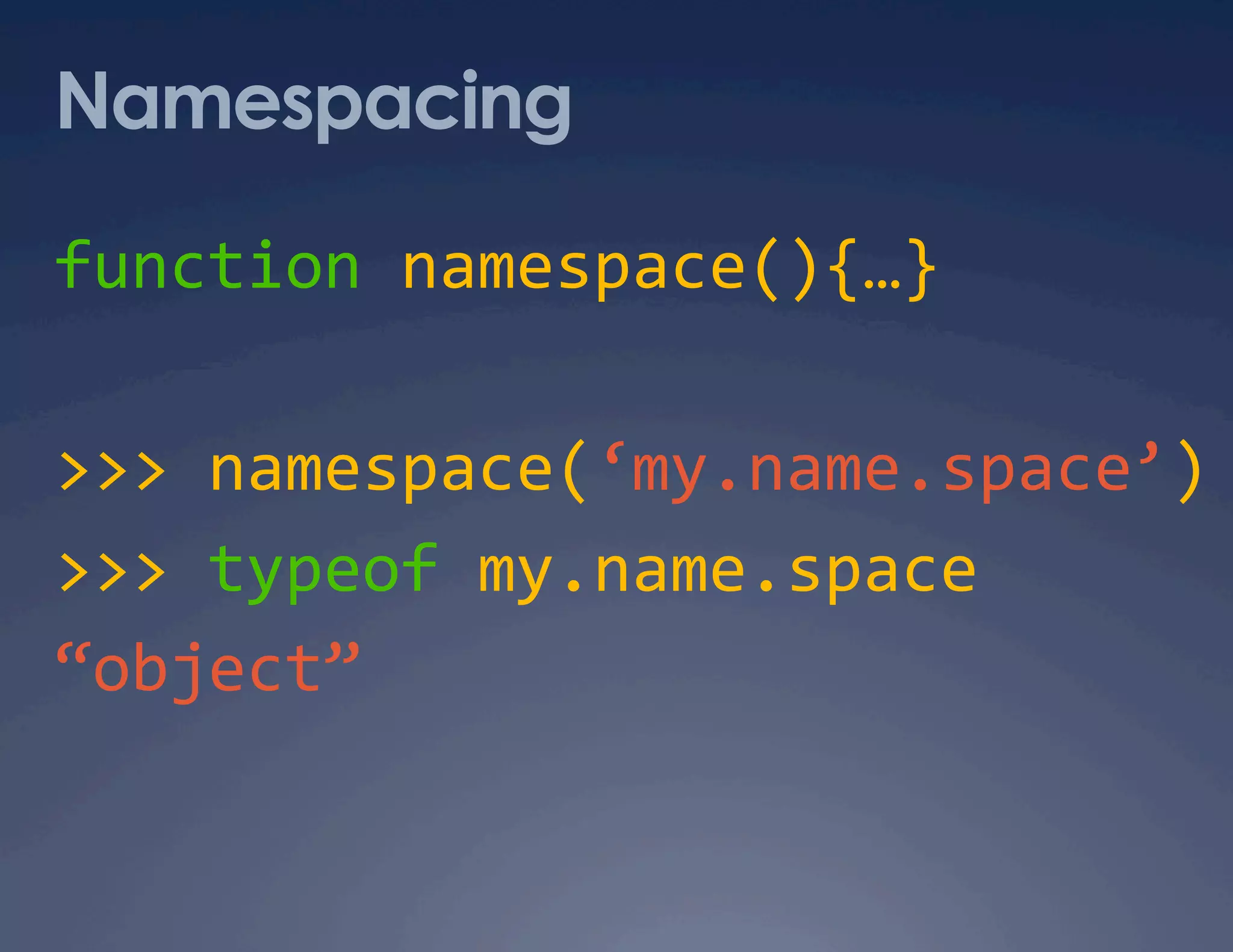
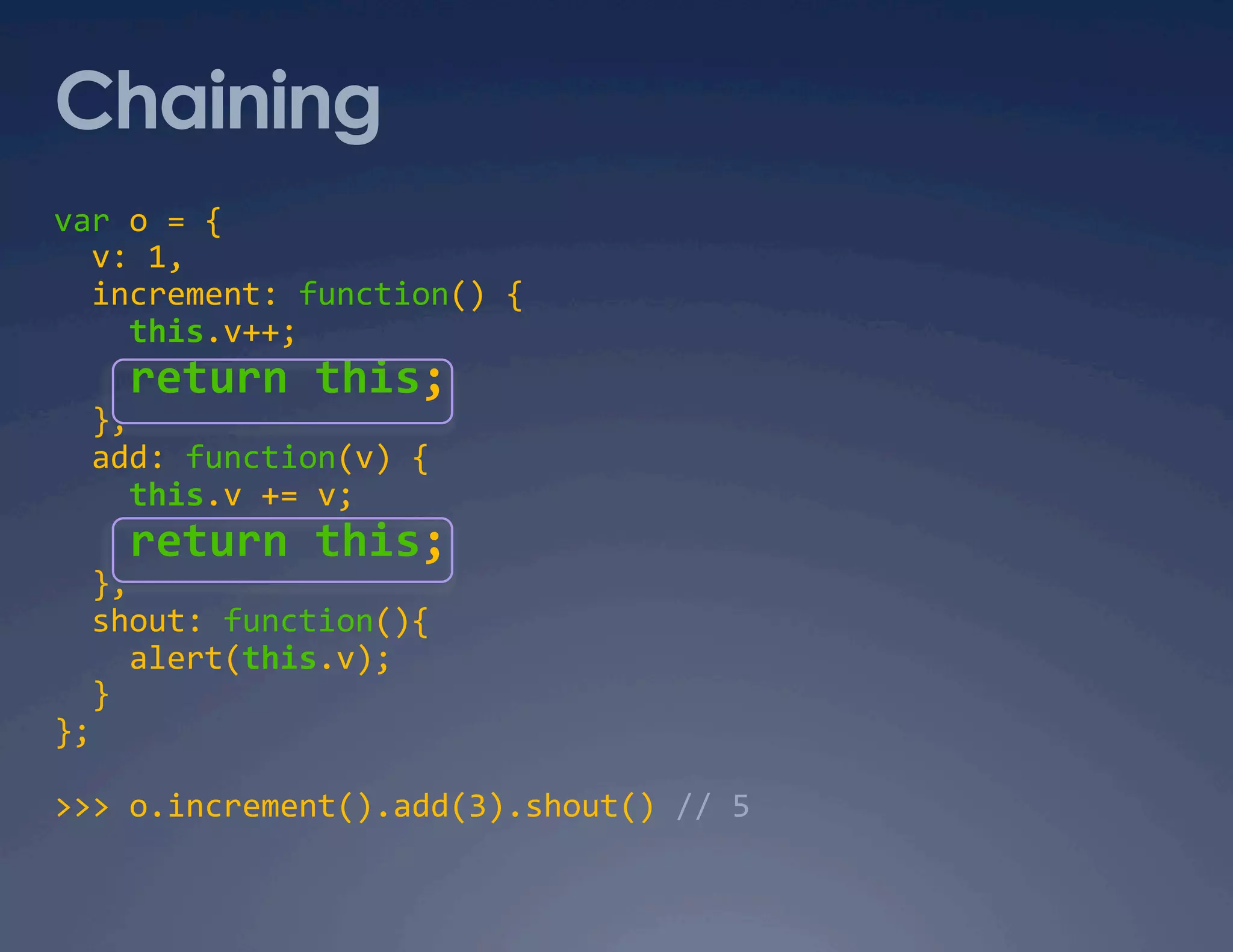
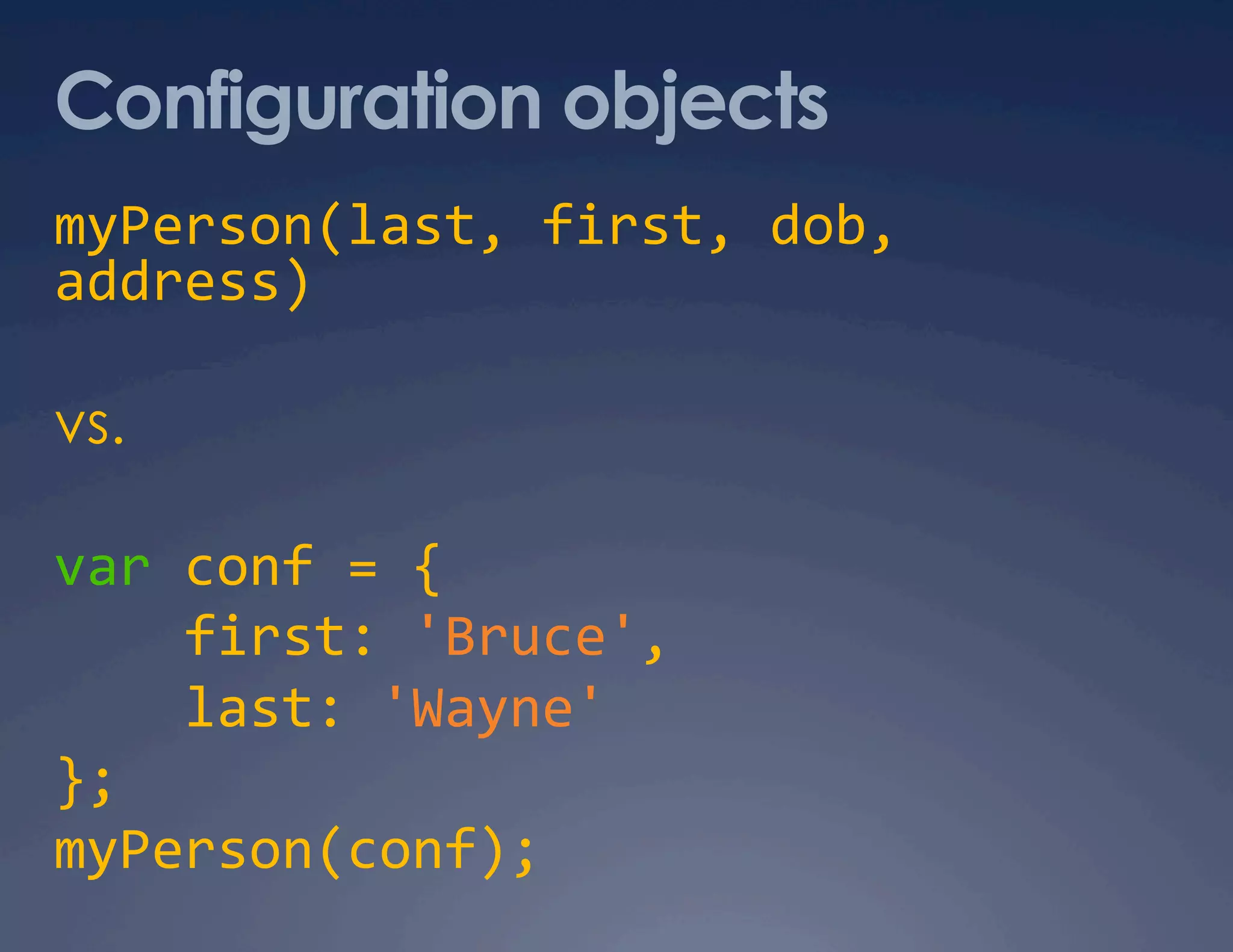
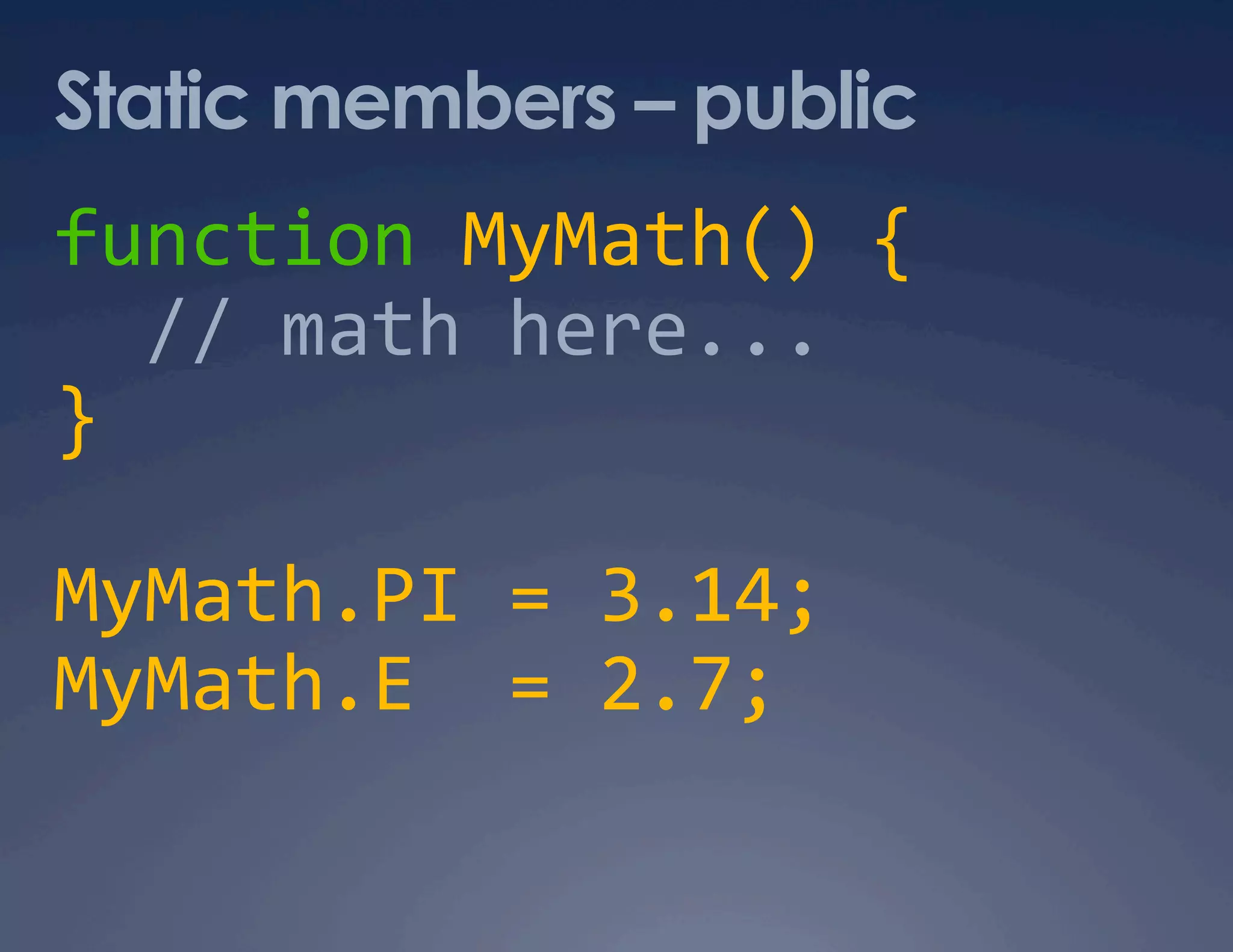
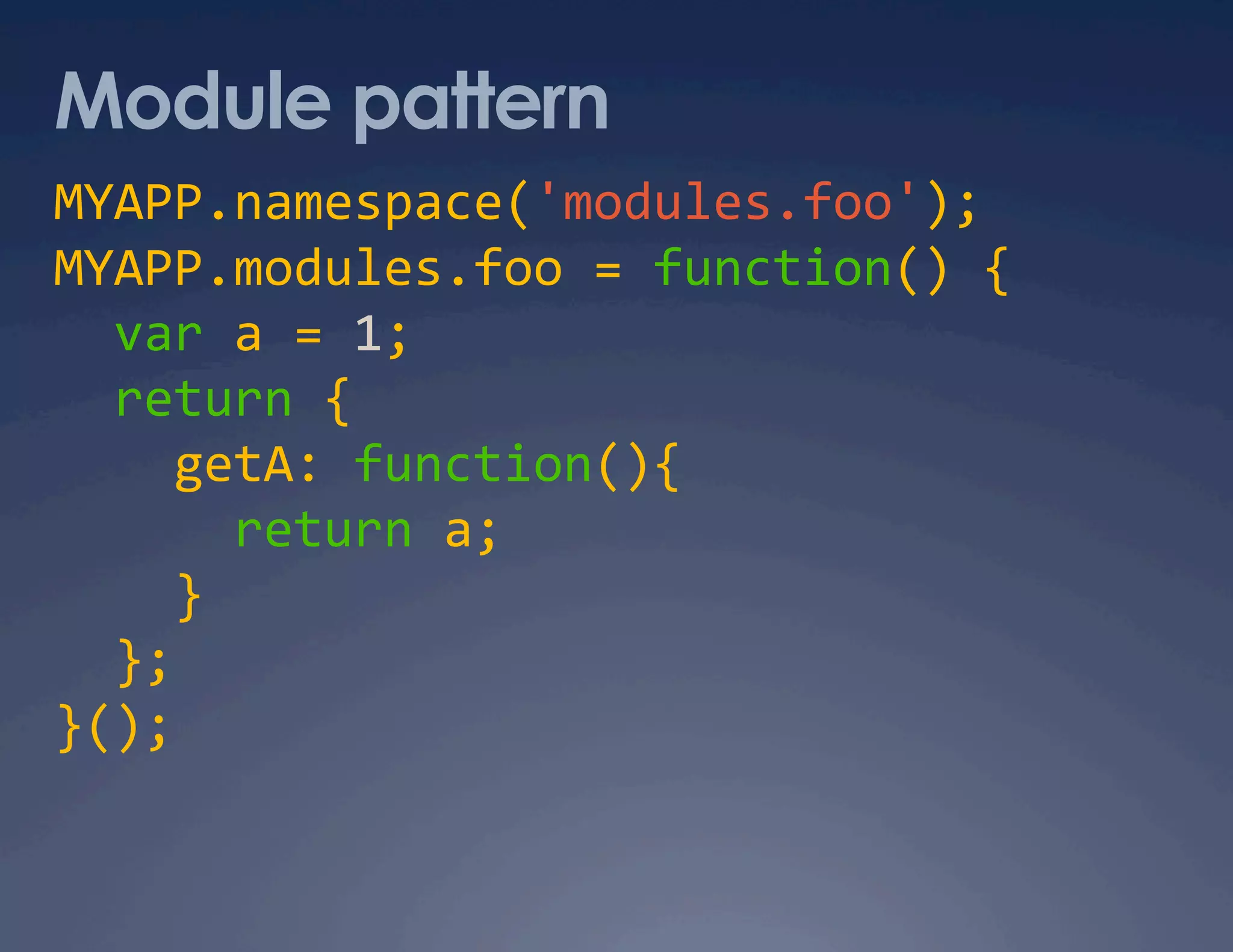

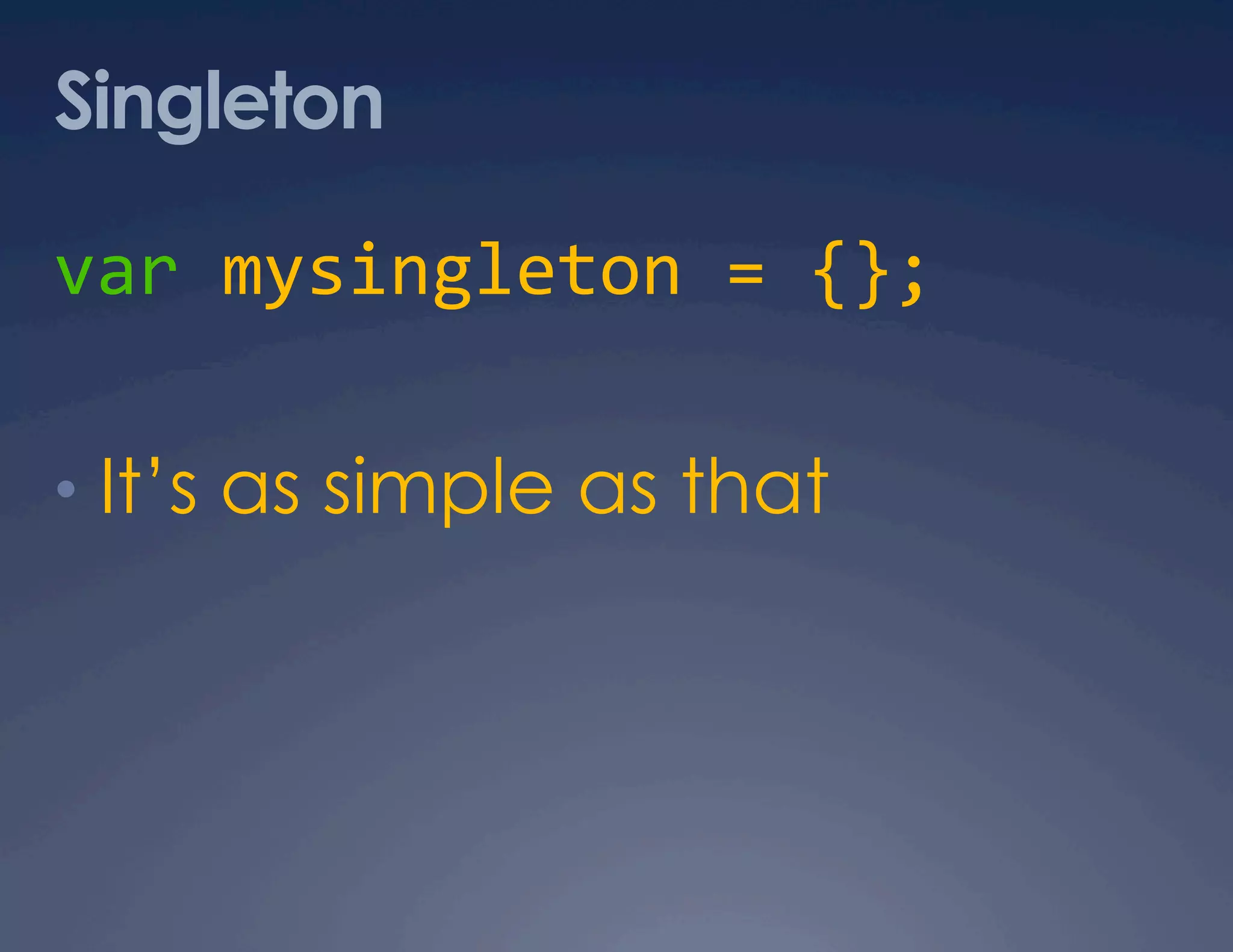
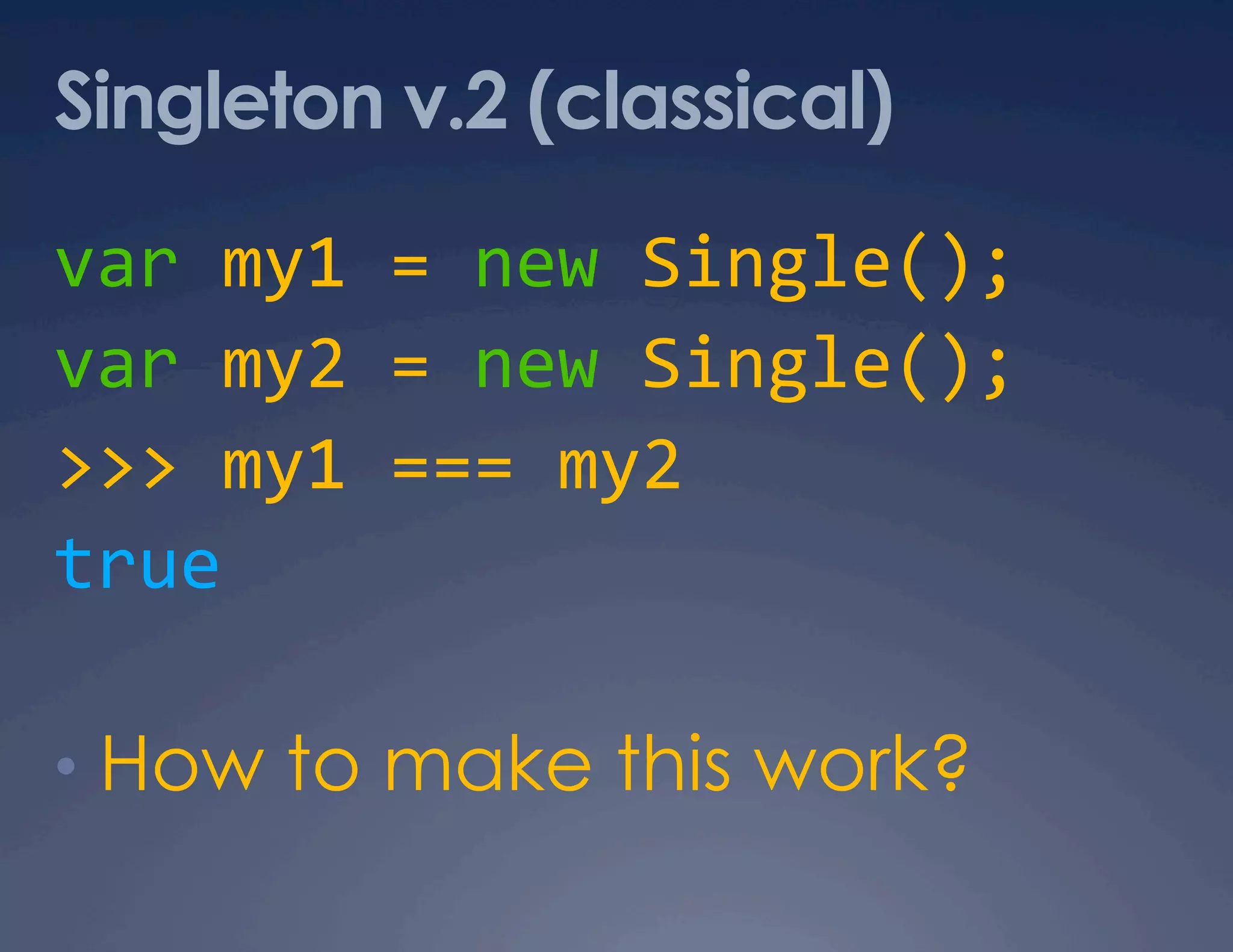
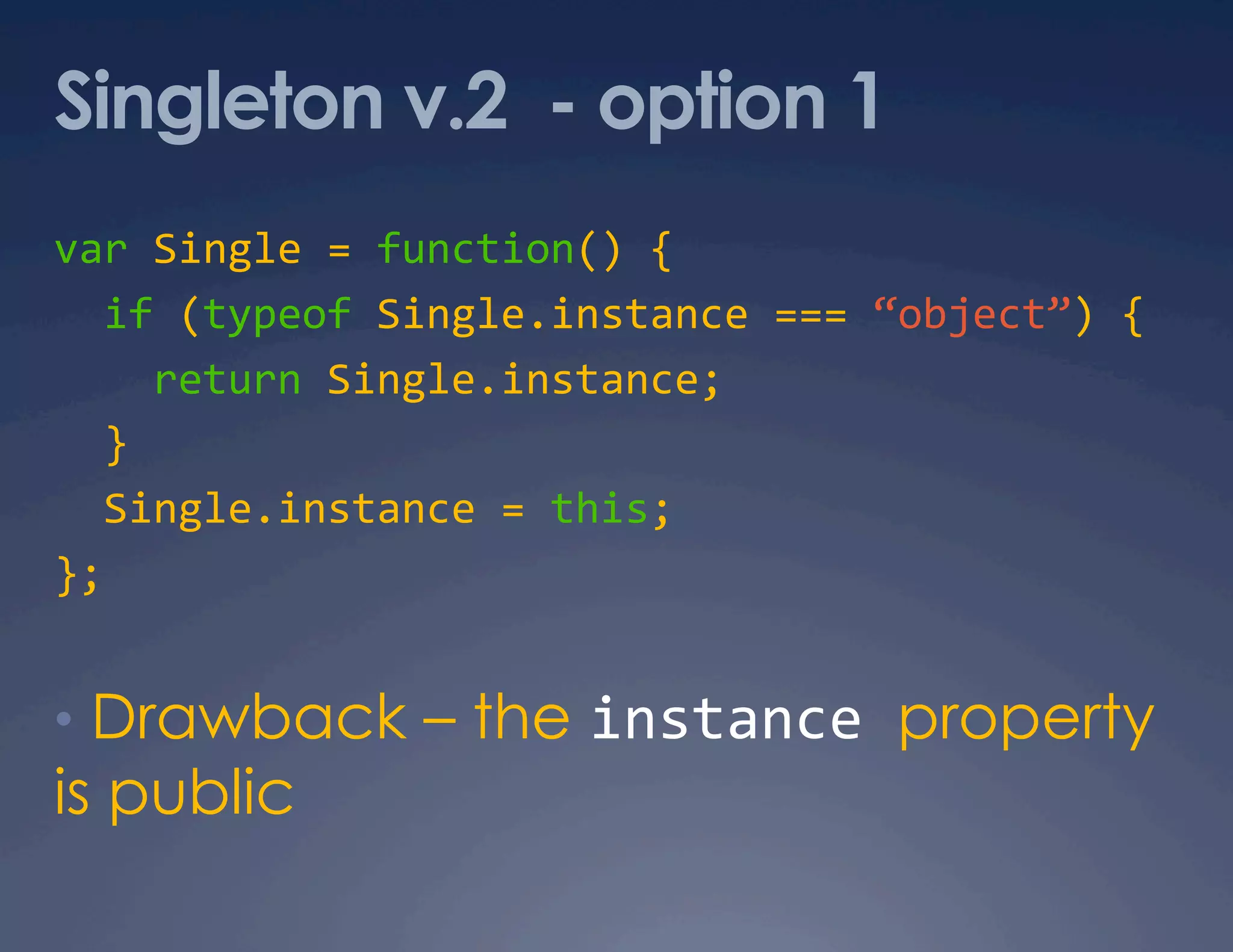
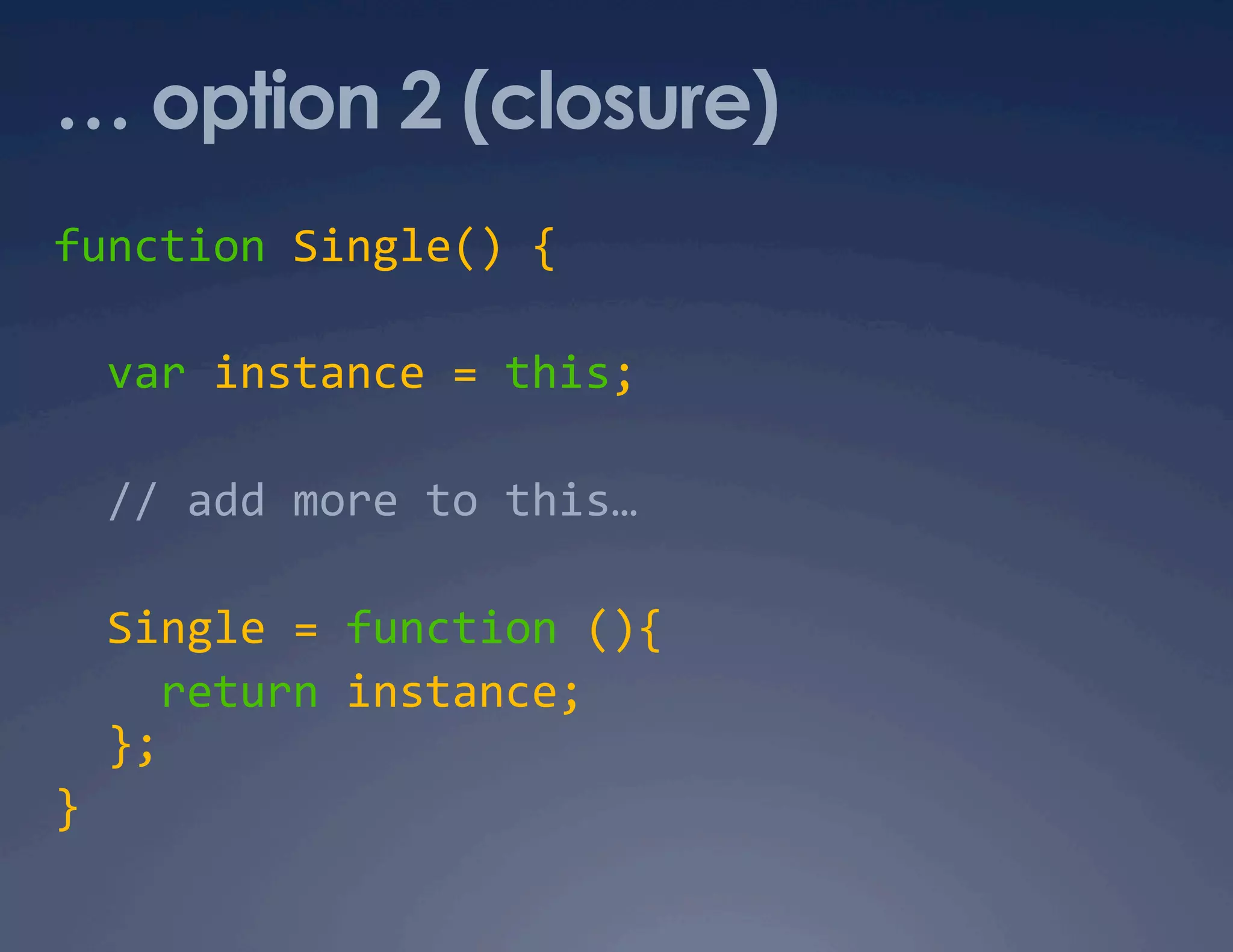
![Factory var Polygon = function() {}; var triangle = Polygon.factory(‘Triangle’); var circle = Polygon.factory(‘Circle’); Polygon.Triangle = function(){}; Polygon.Circle = function(){}; Polygon.factory = function(name) { if (typeof Polygon[name] === “function”) { return new Polygon[name](); } };](https://image.slidesharecdn.com/javascript-patterns-090918194552-phpapp01/75/JavaScript-Patterns-67-2048.jpg)



